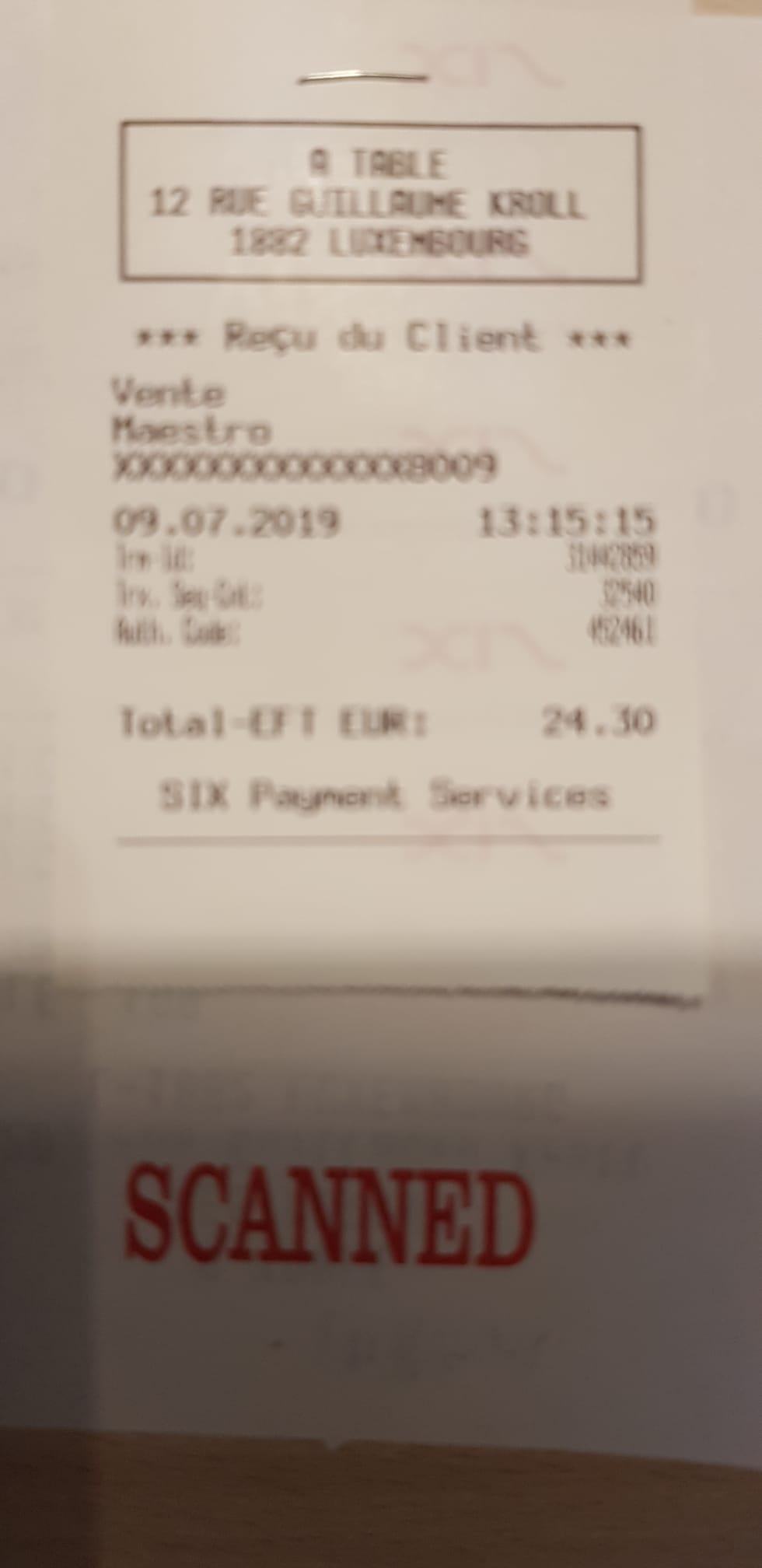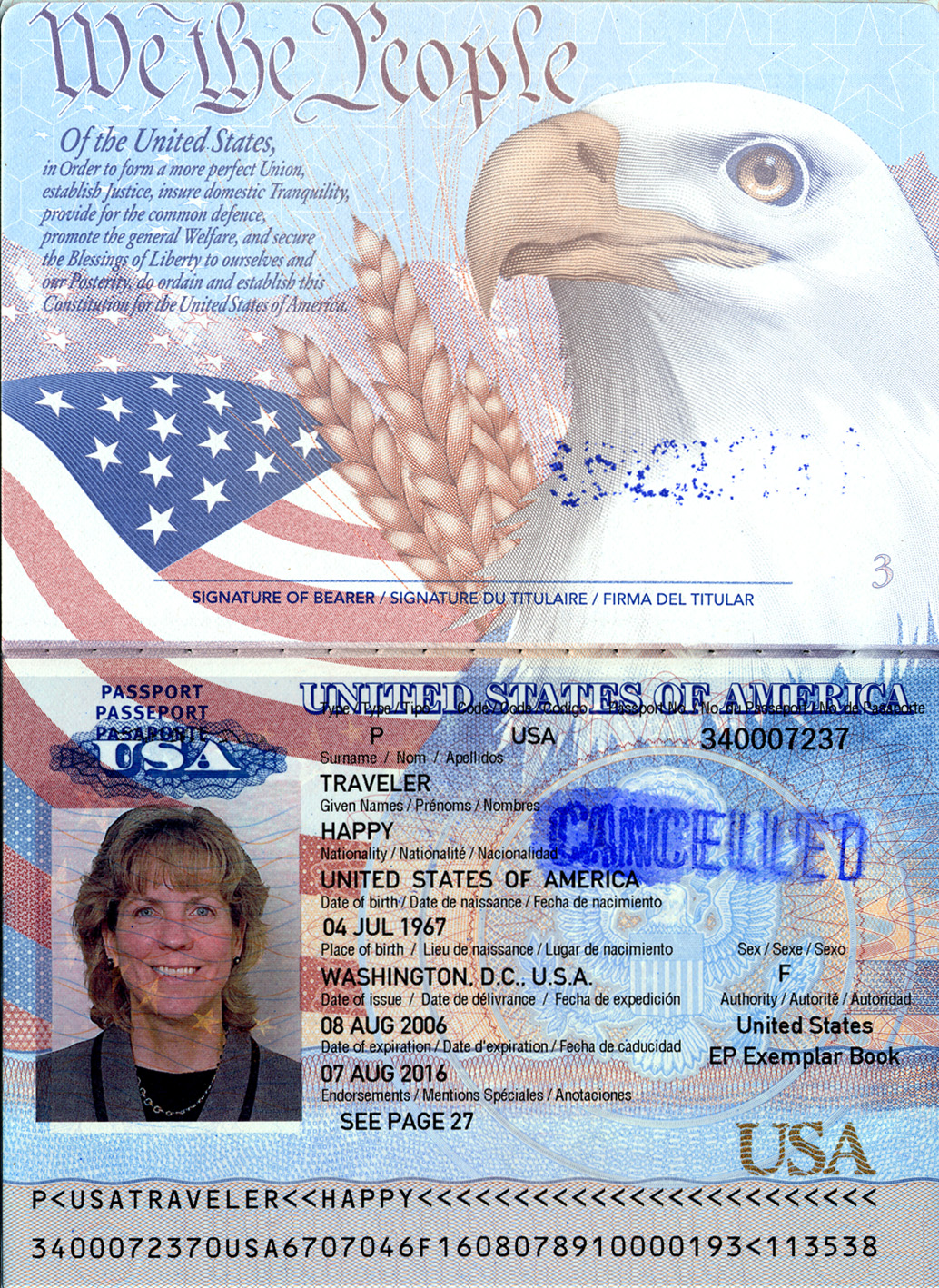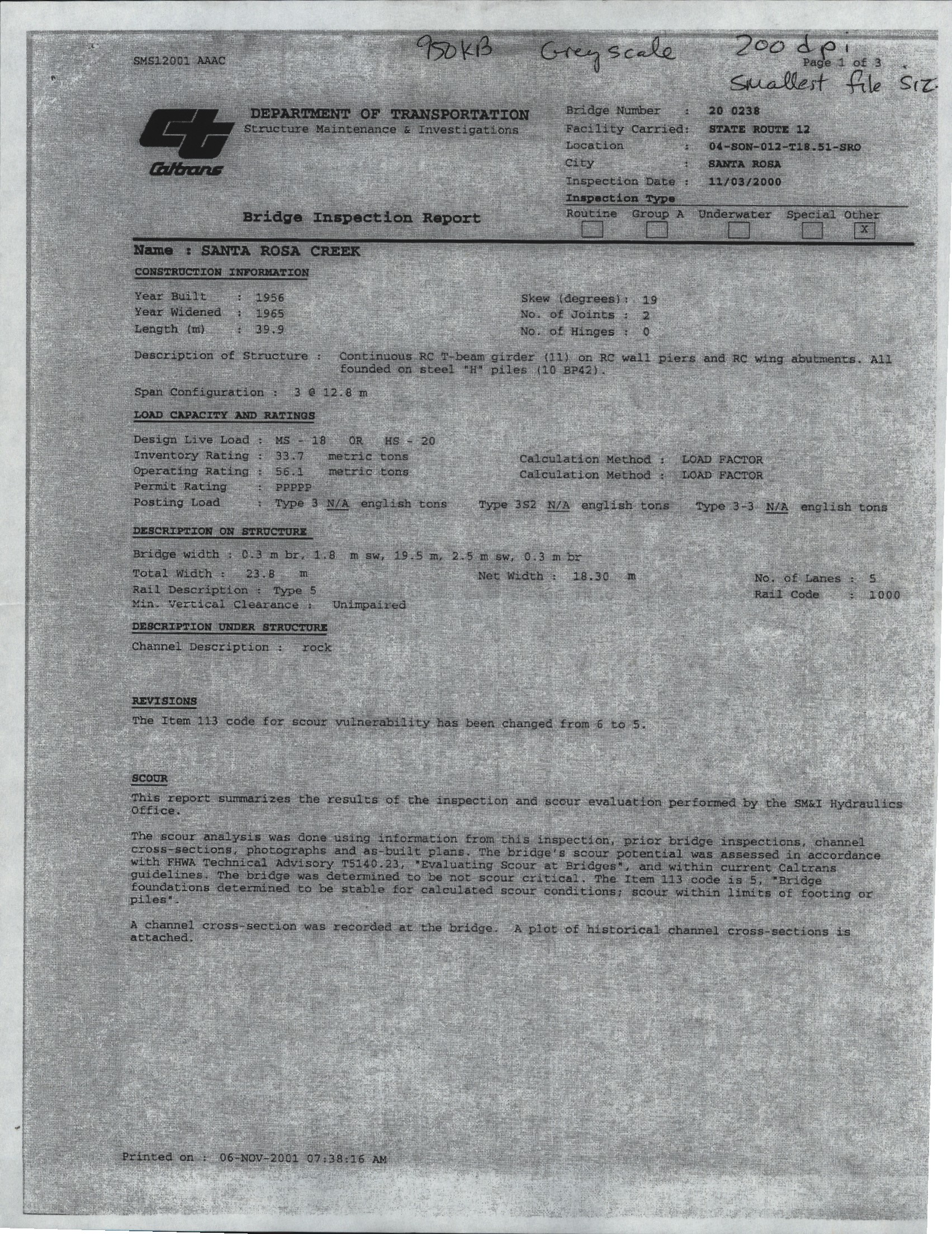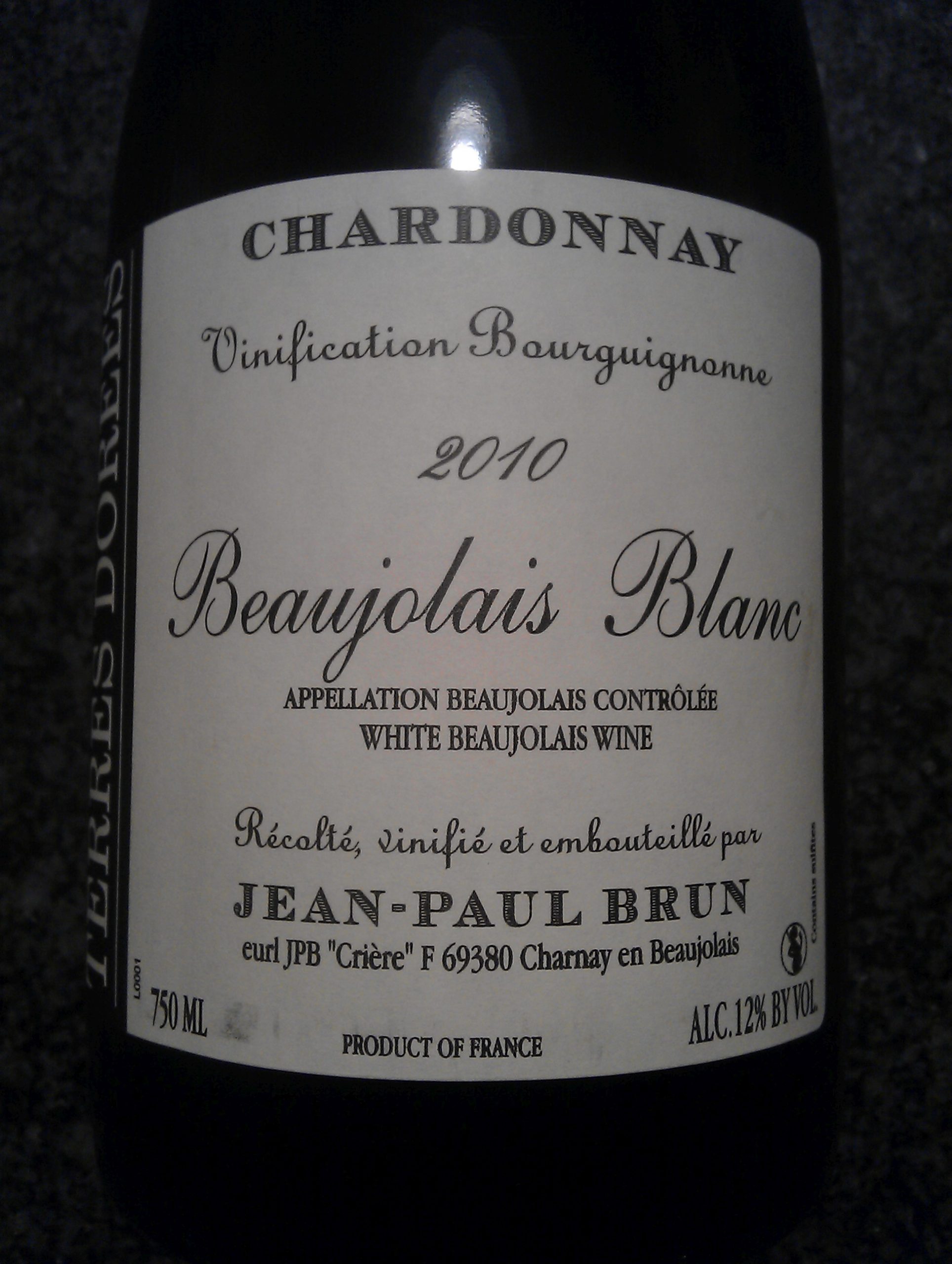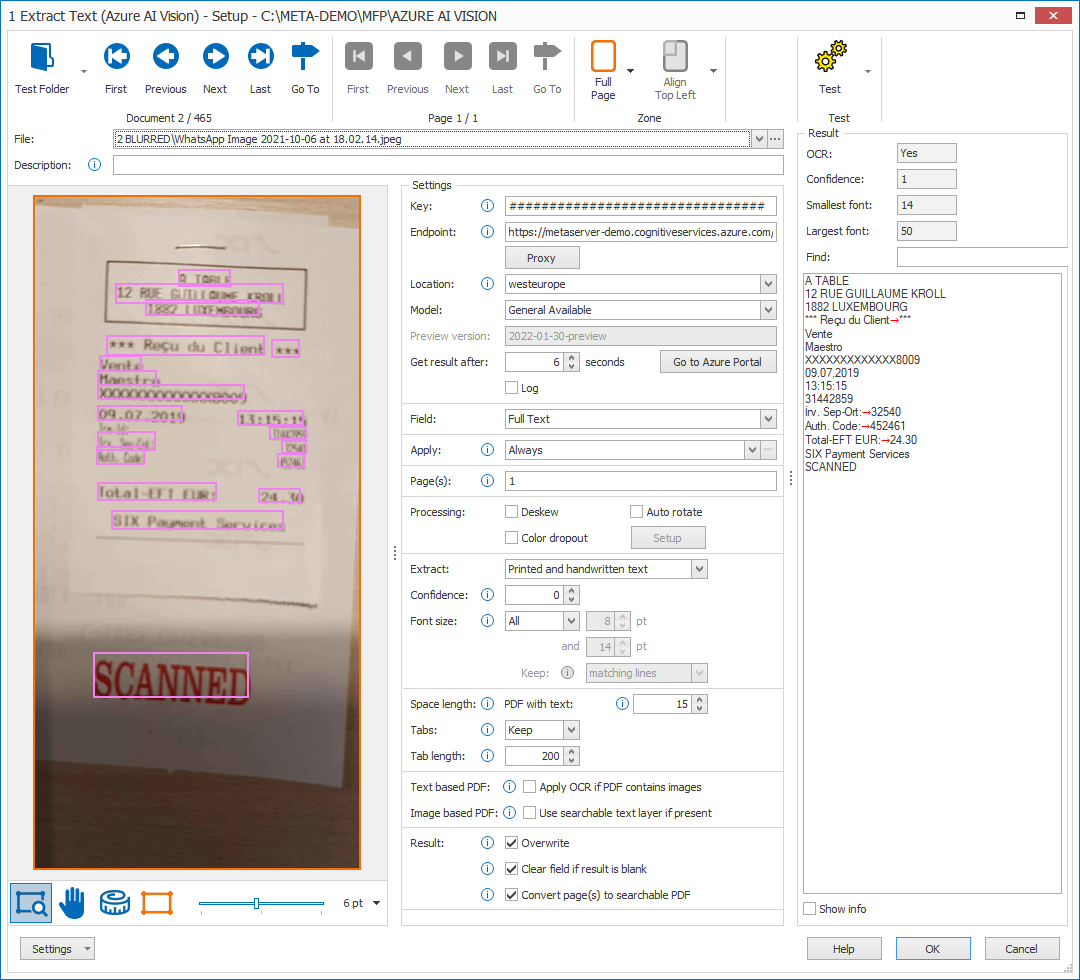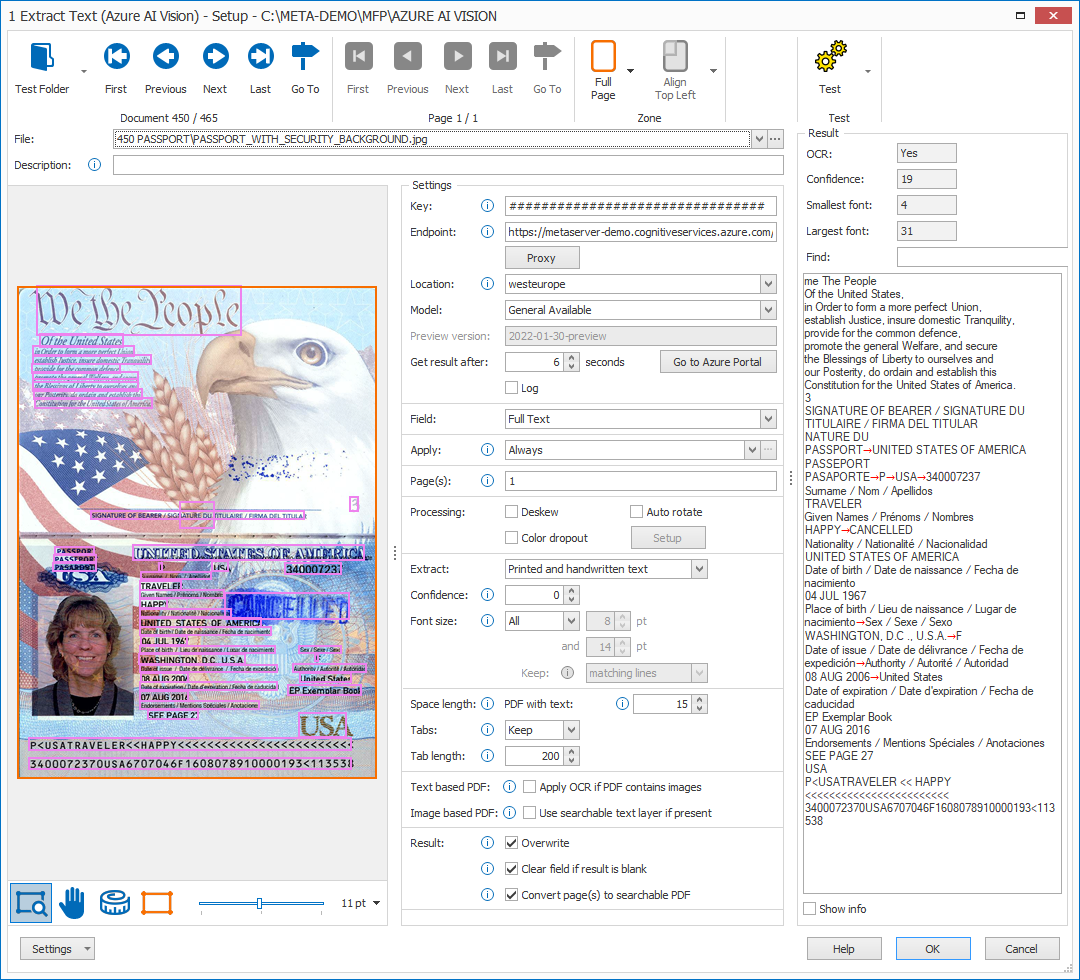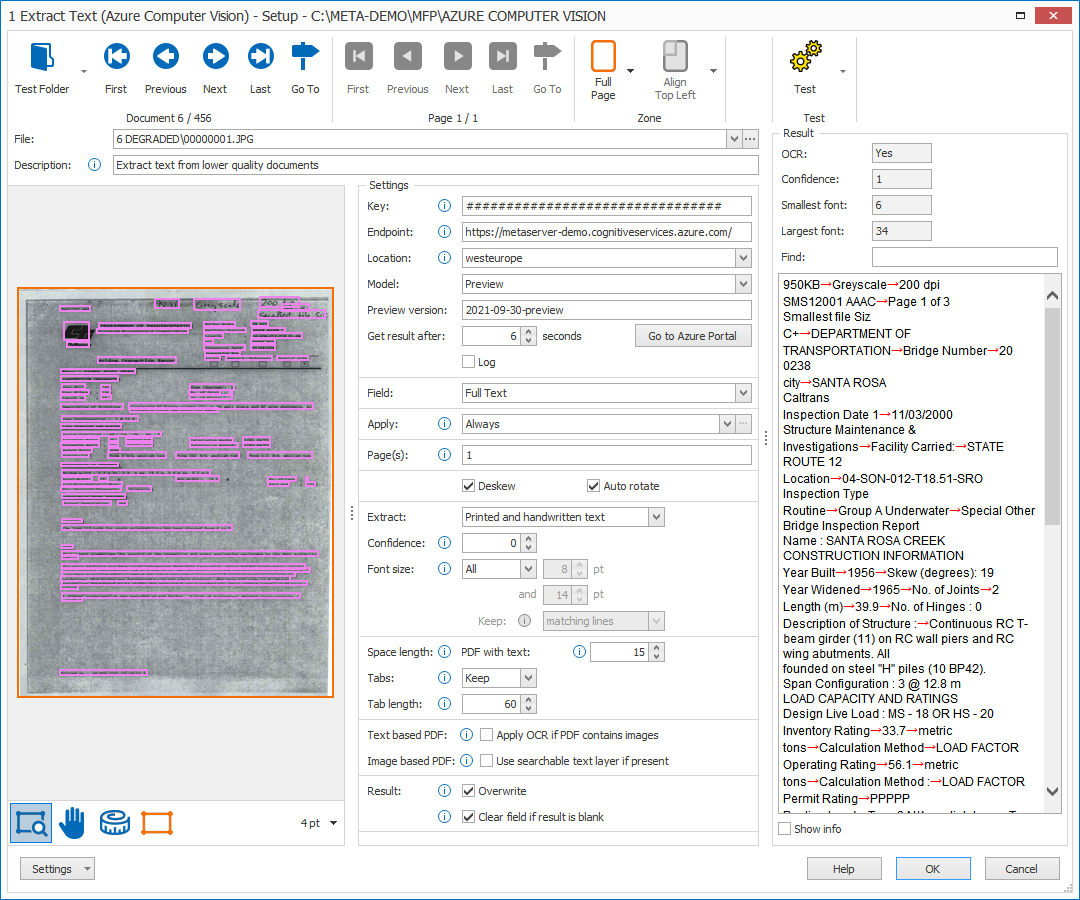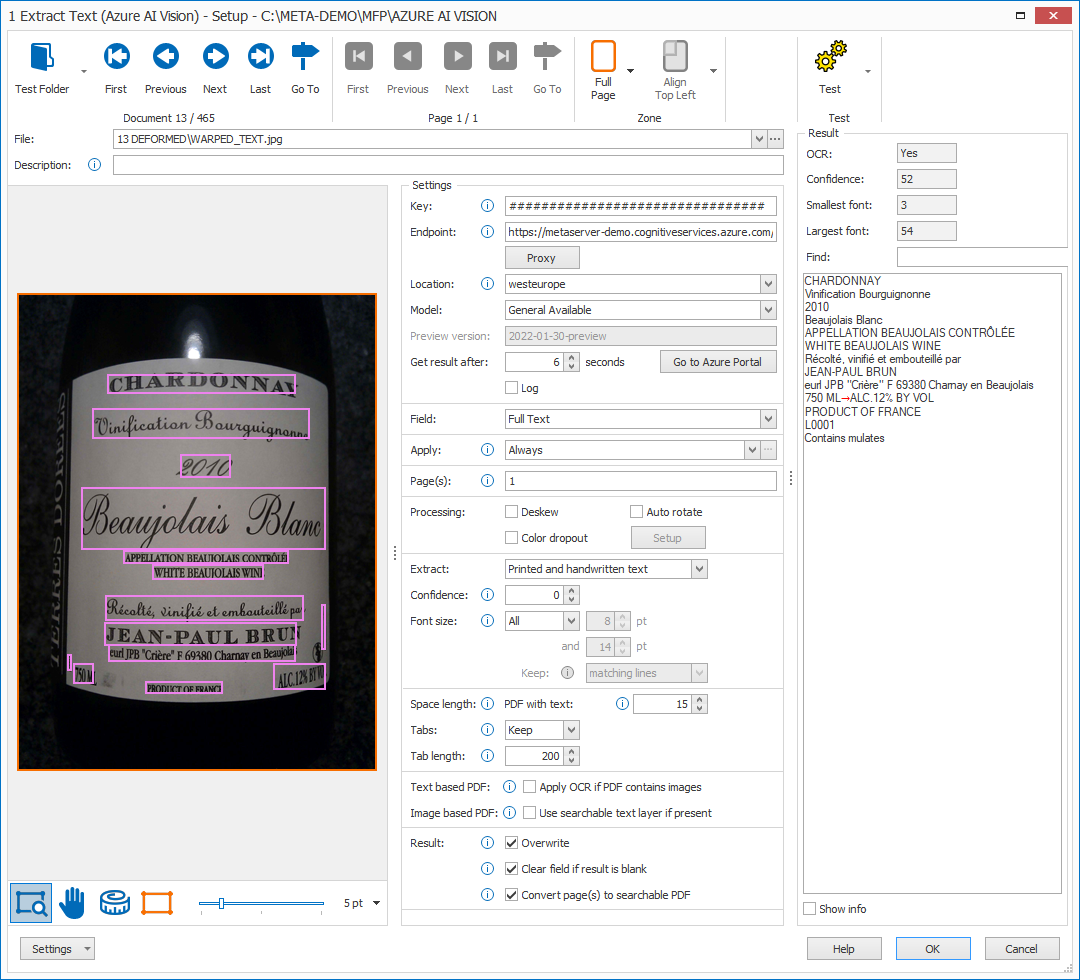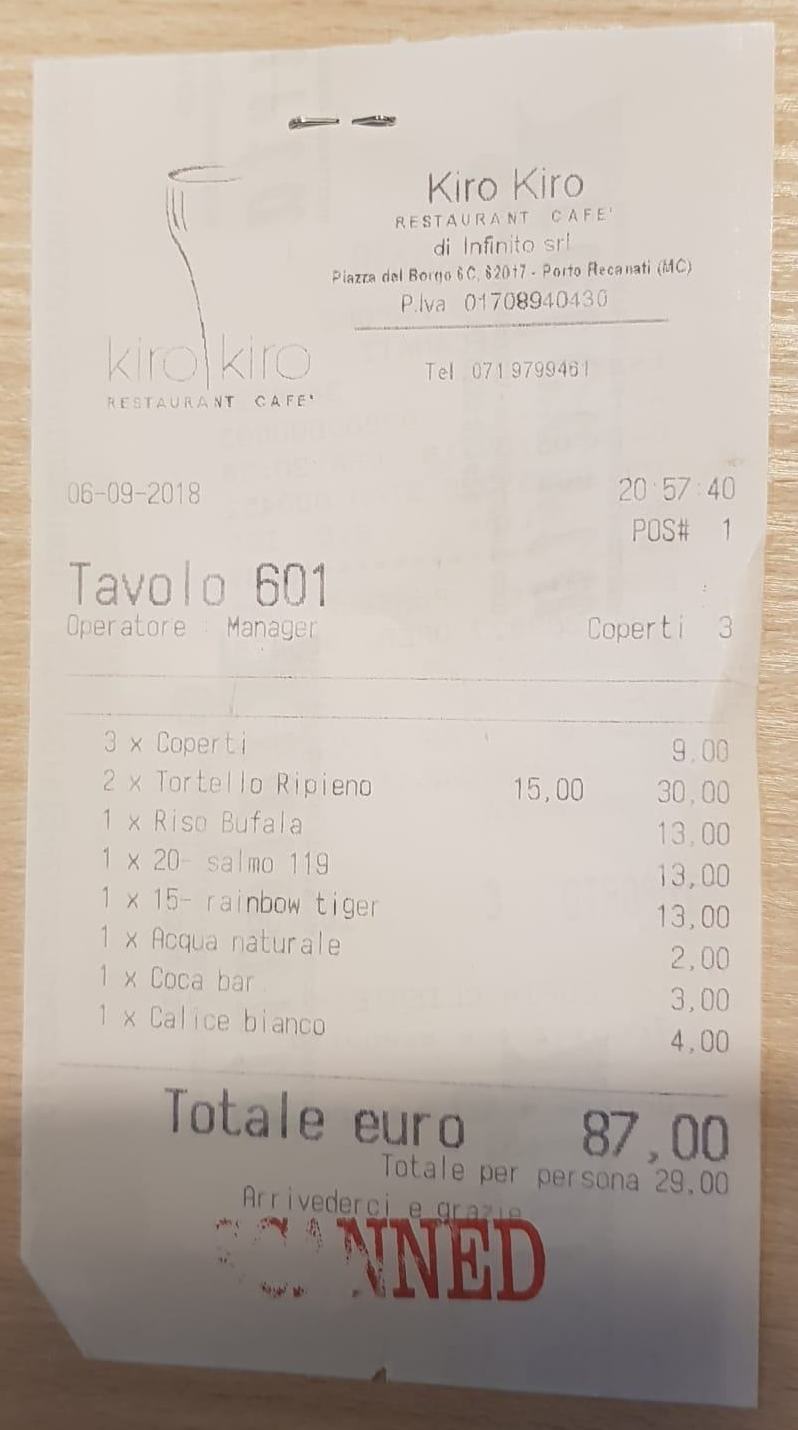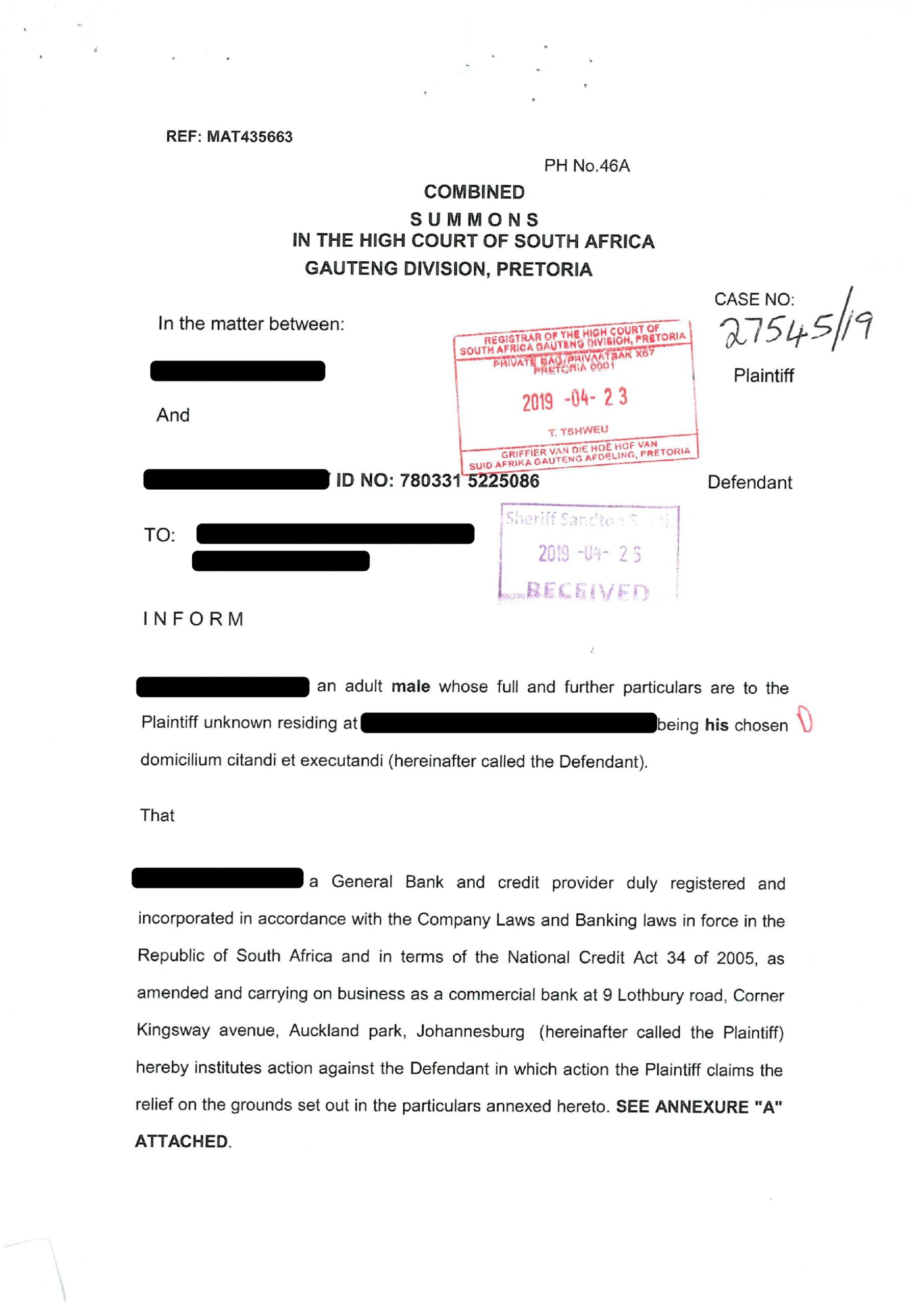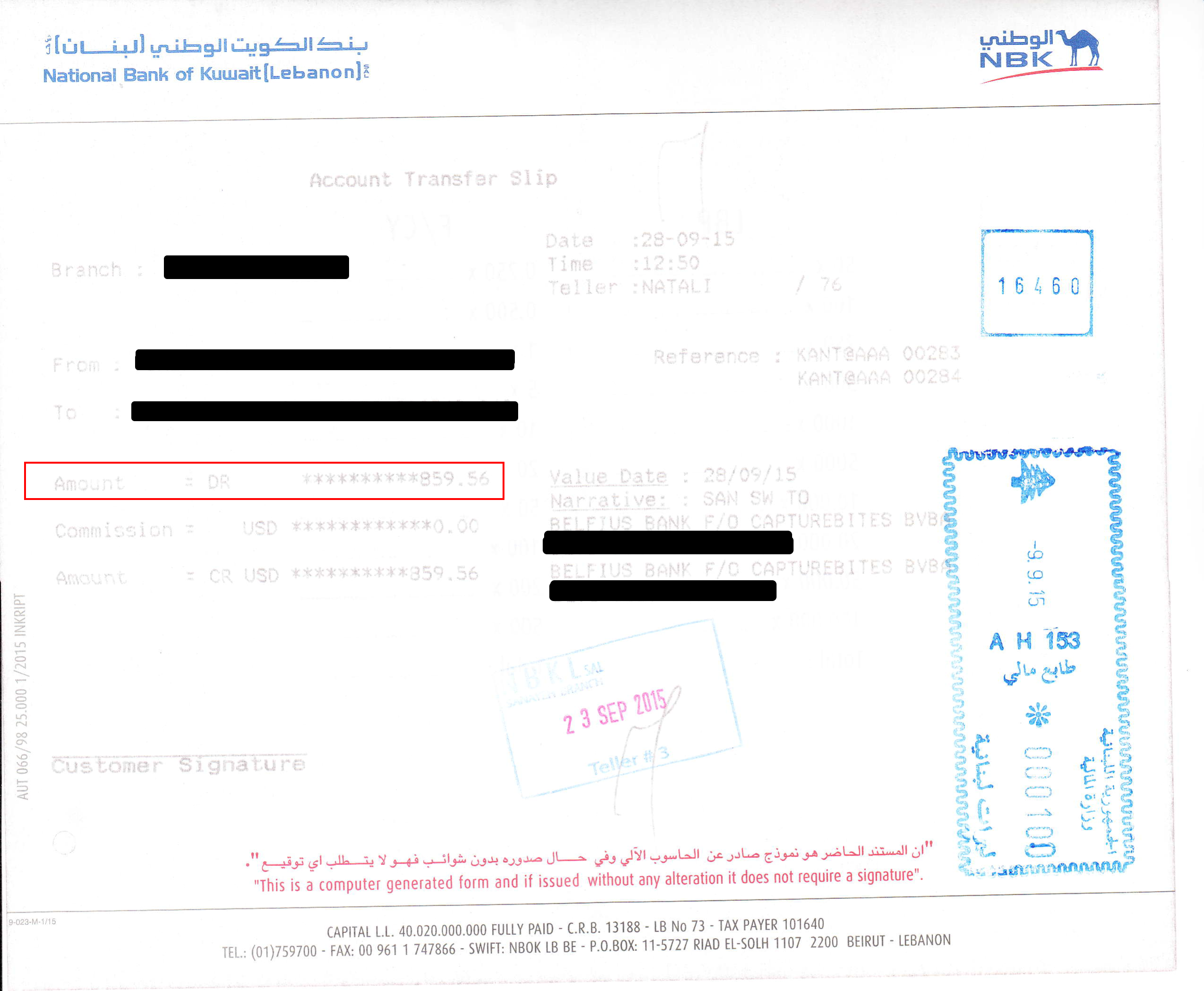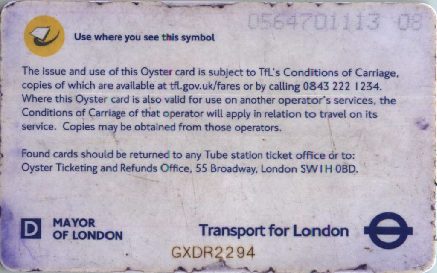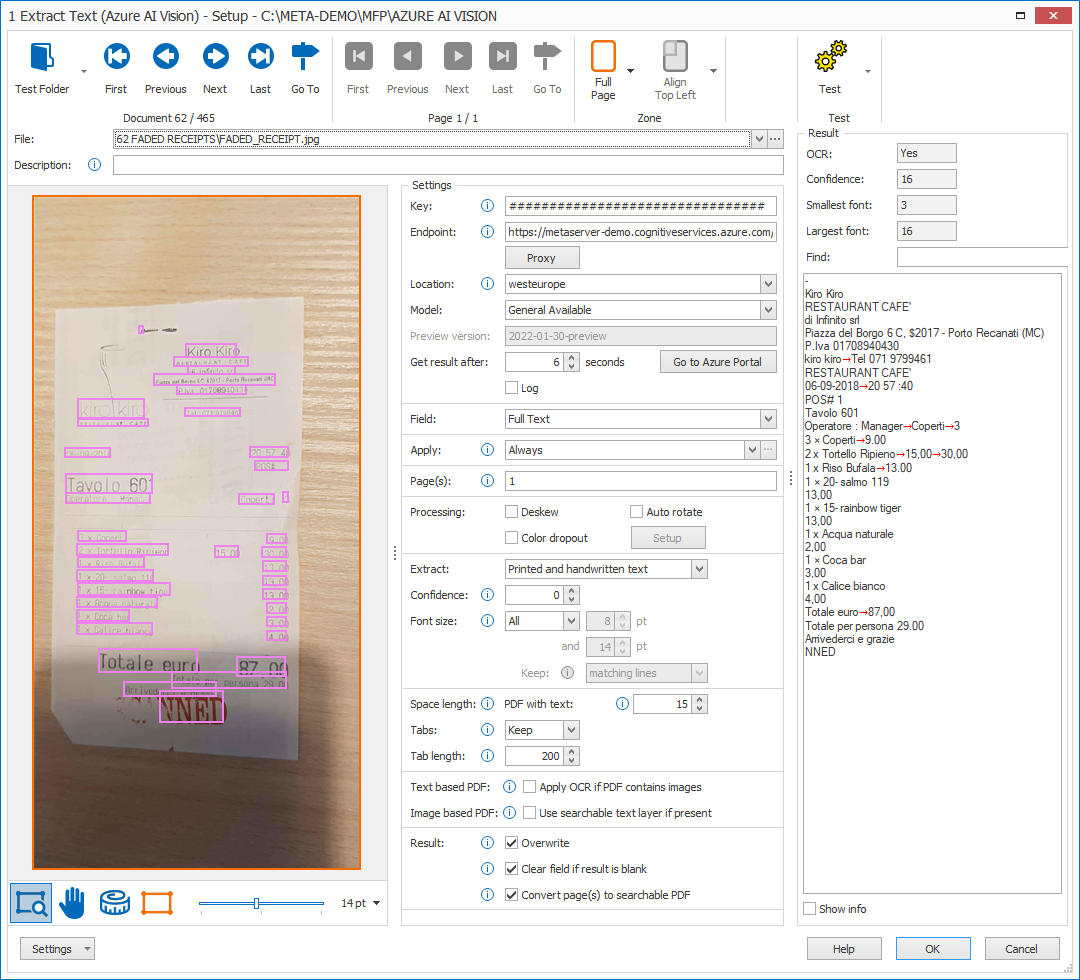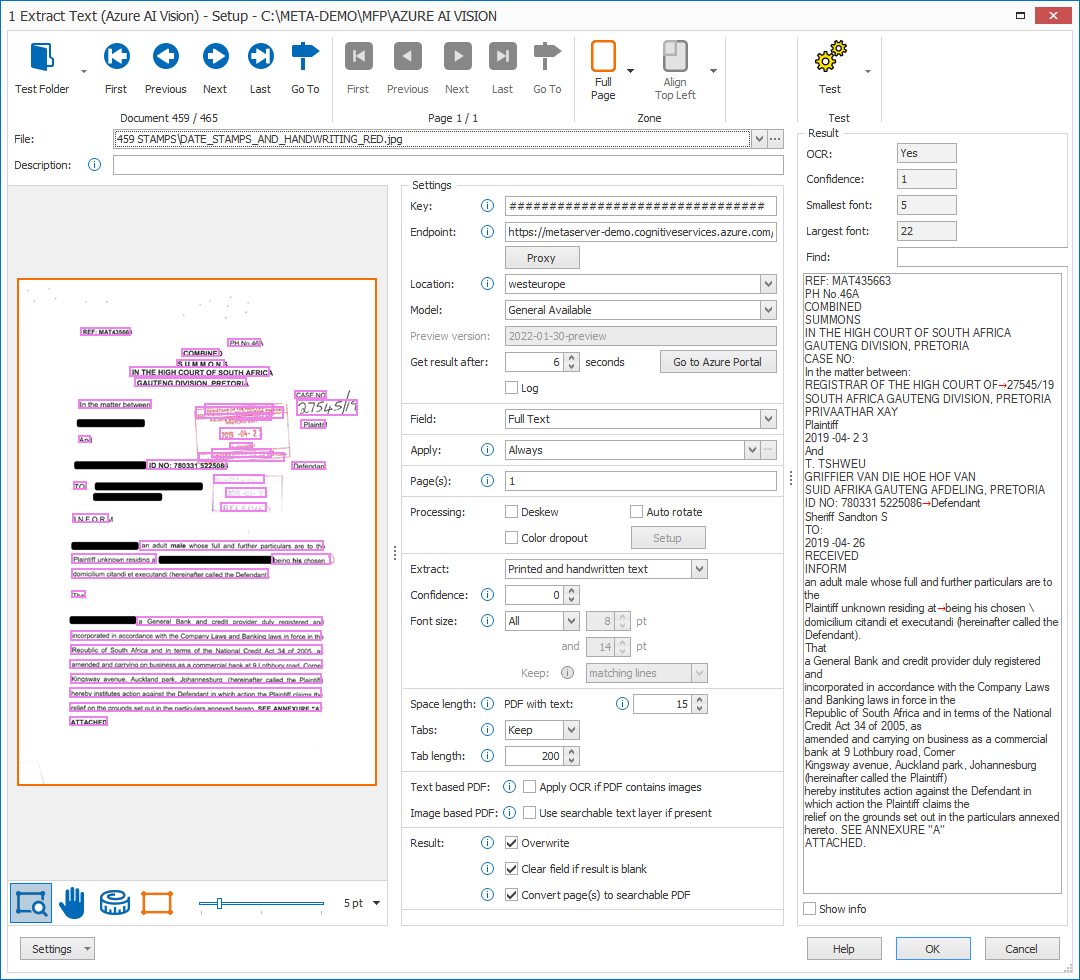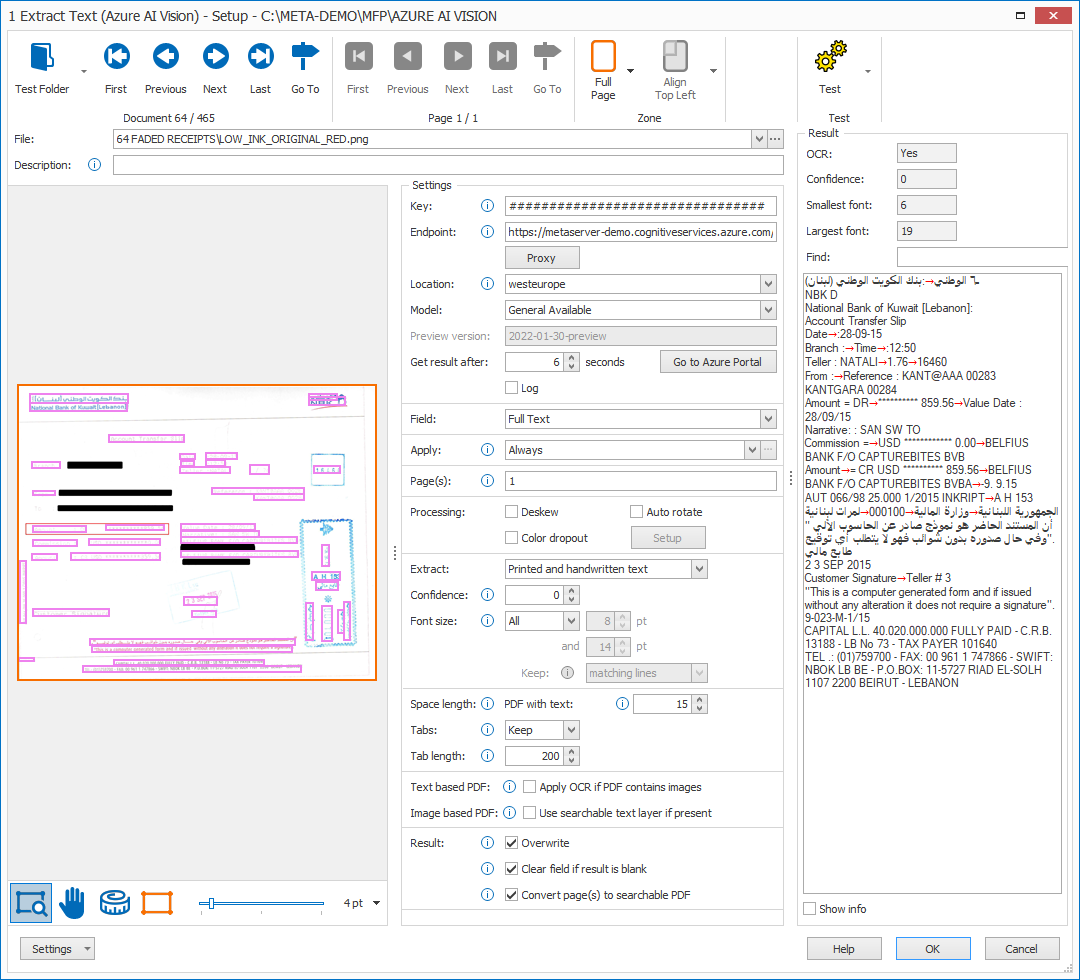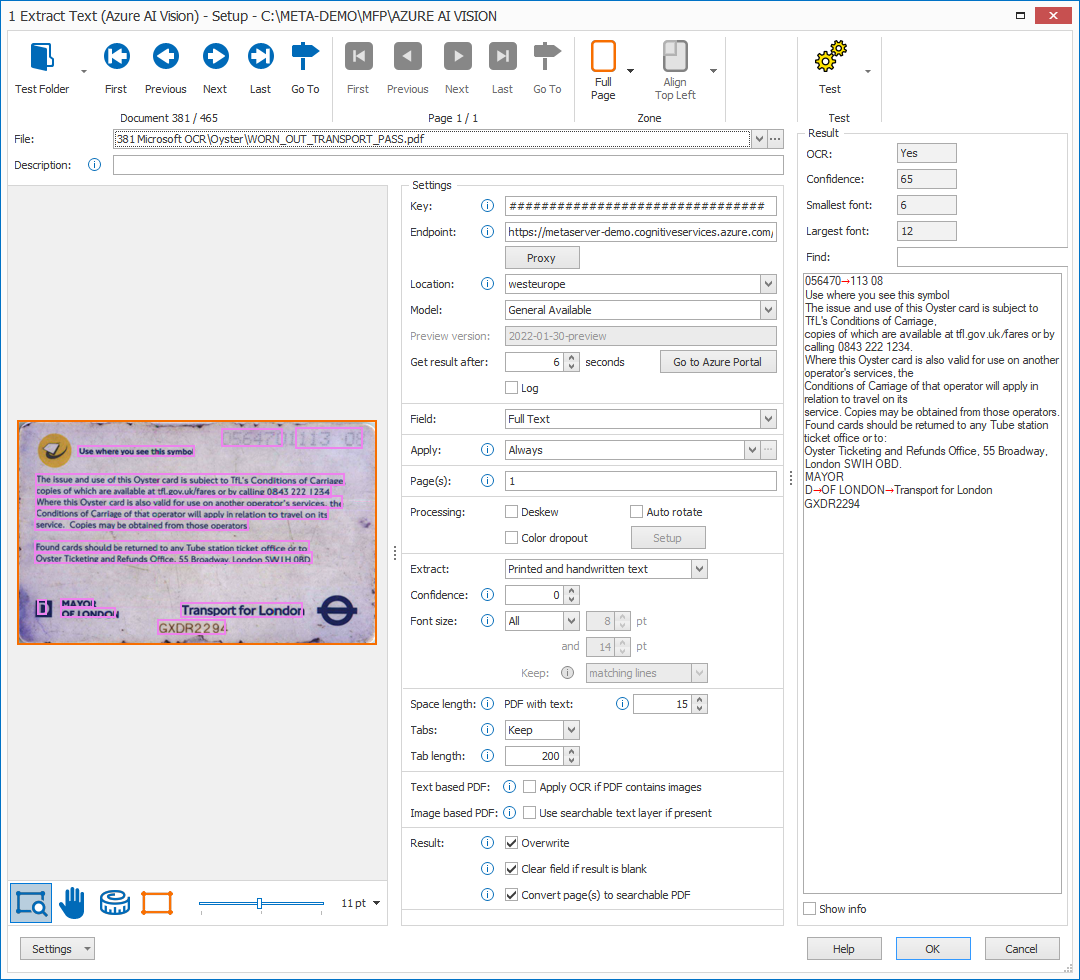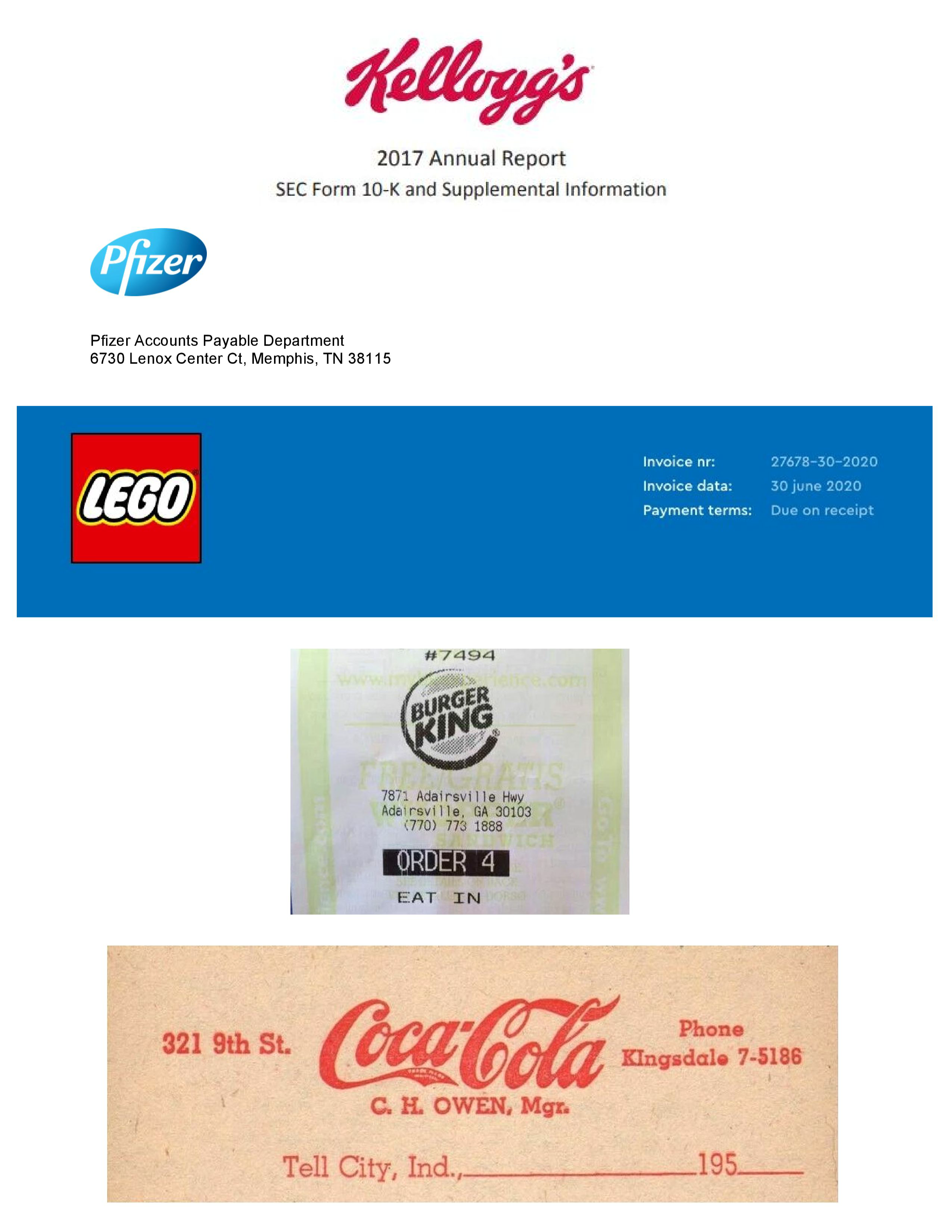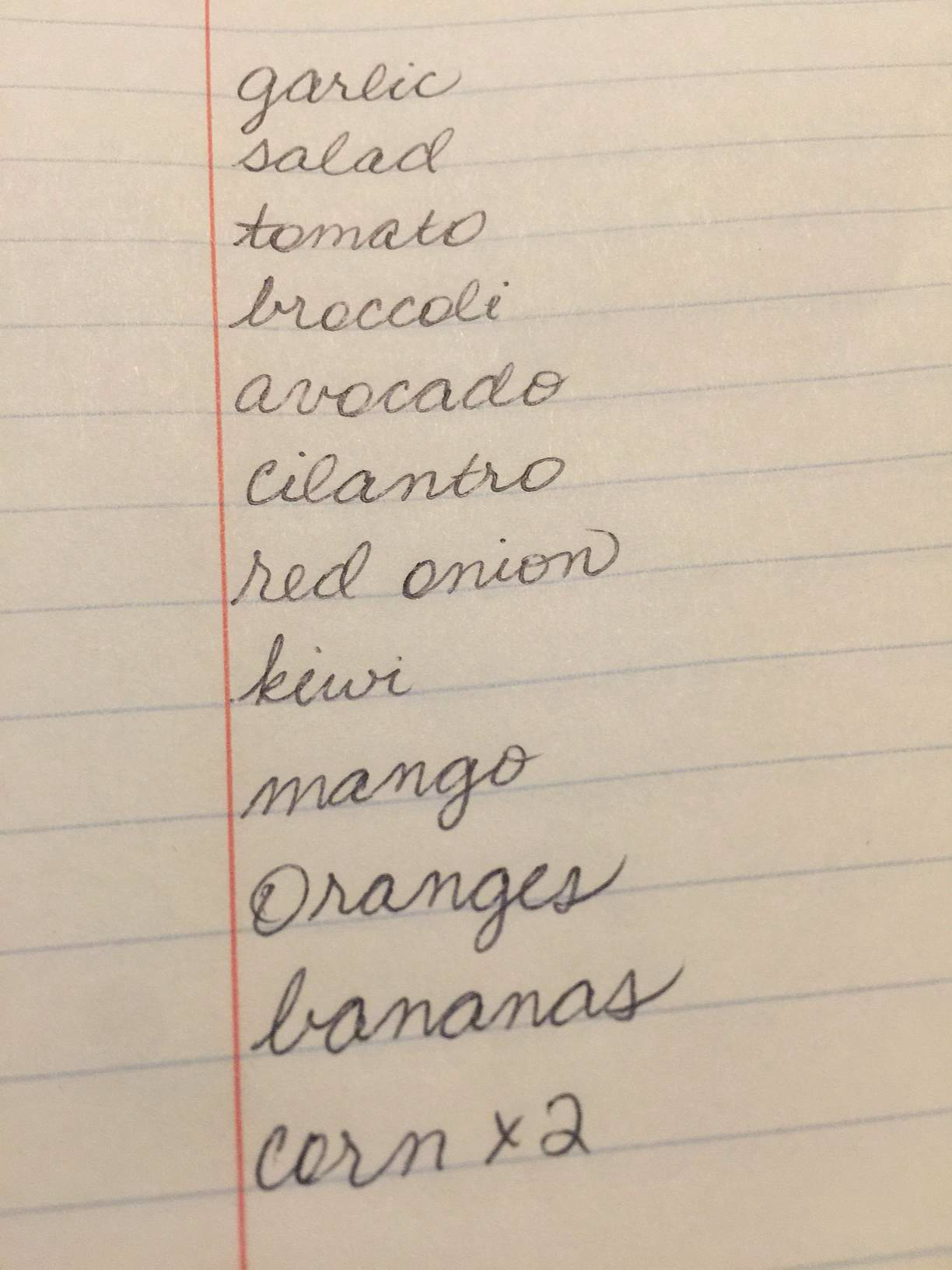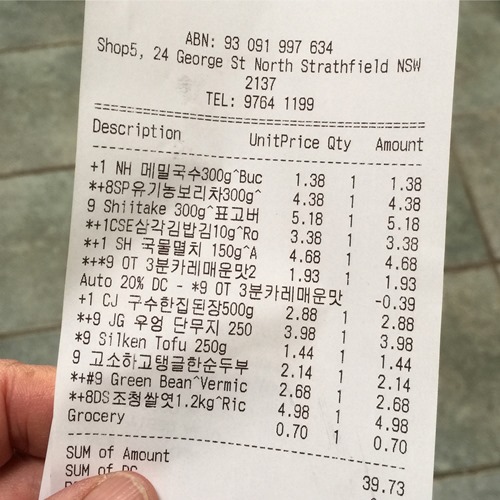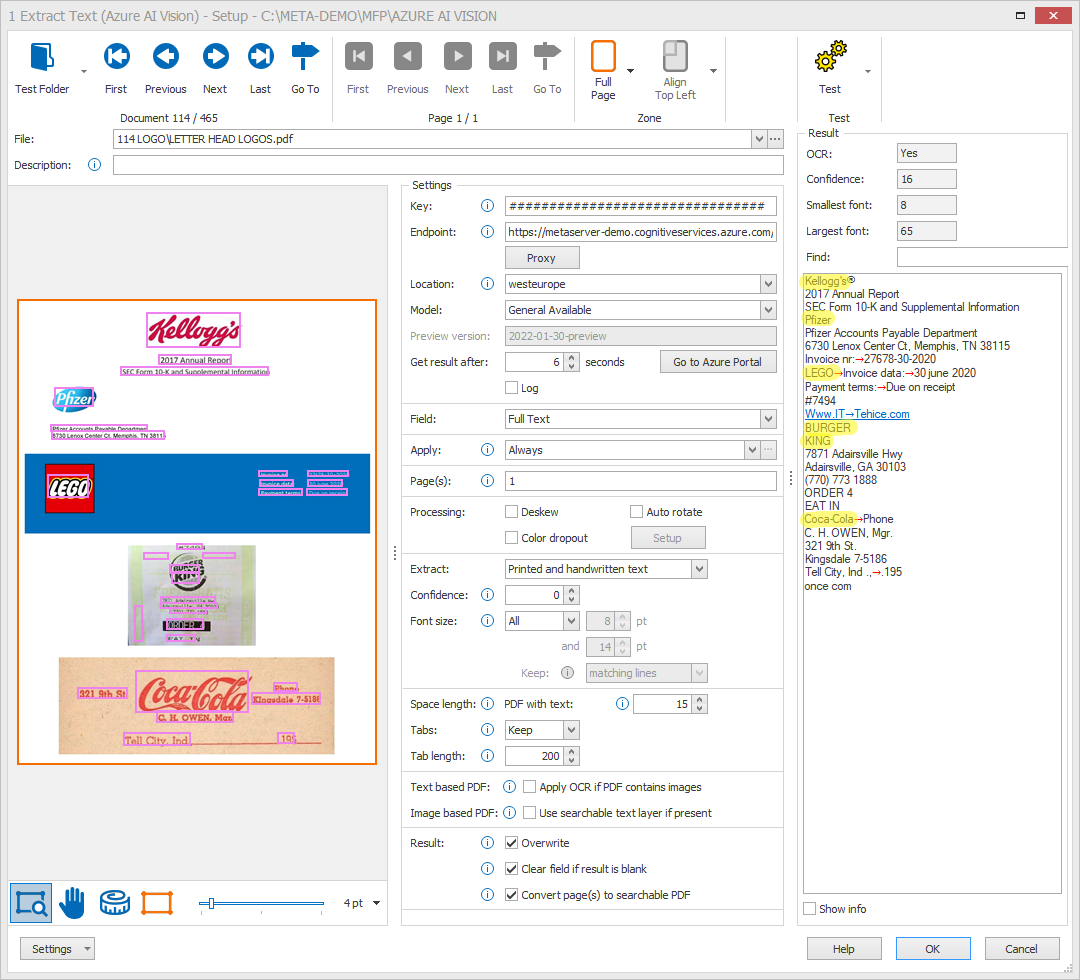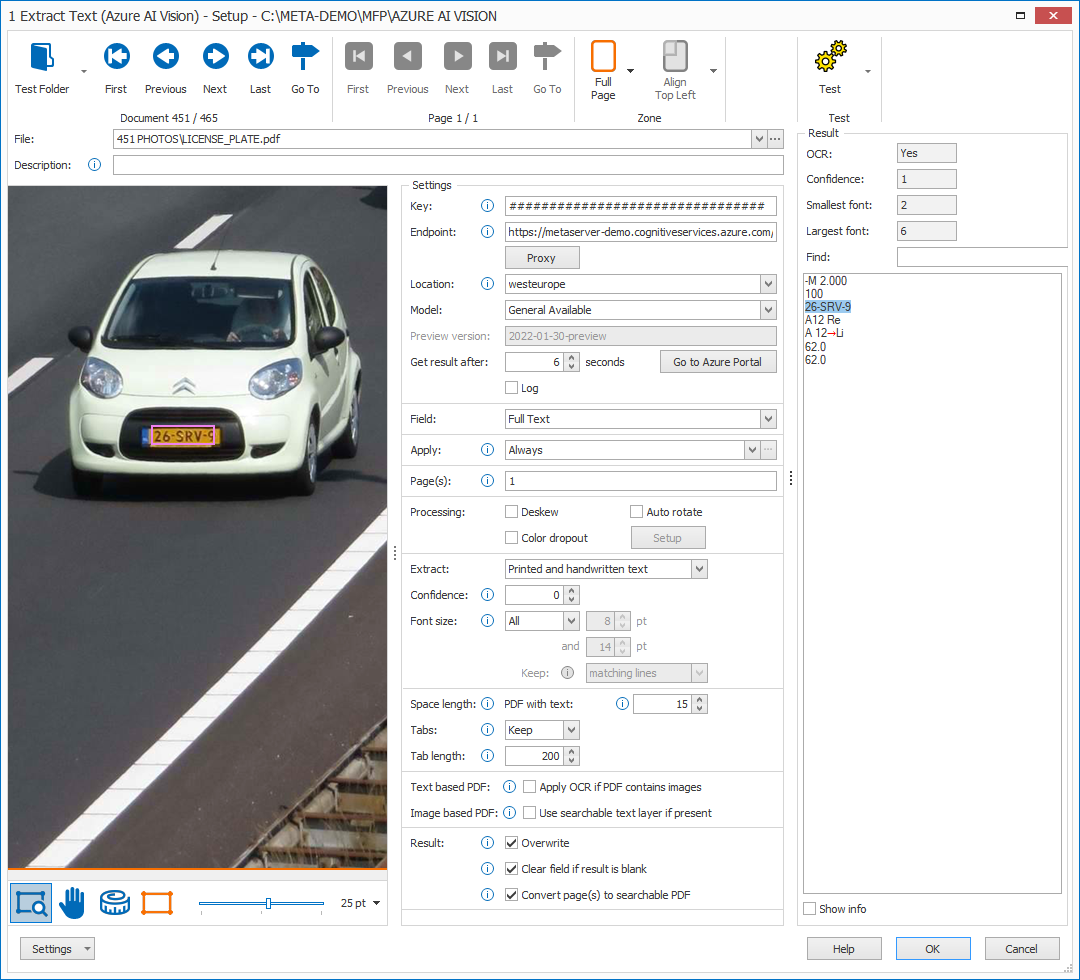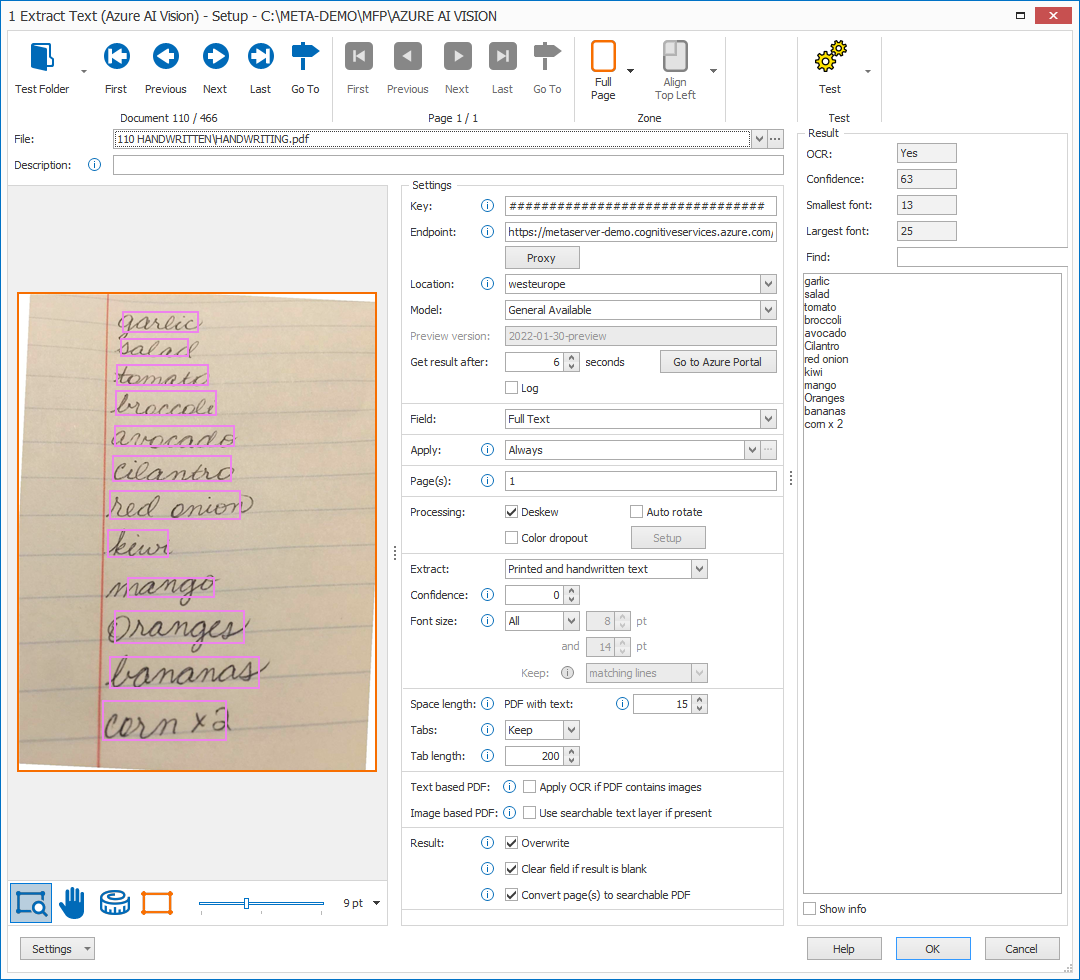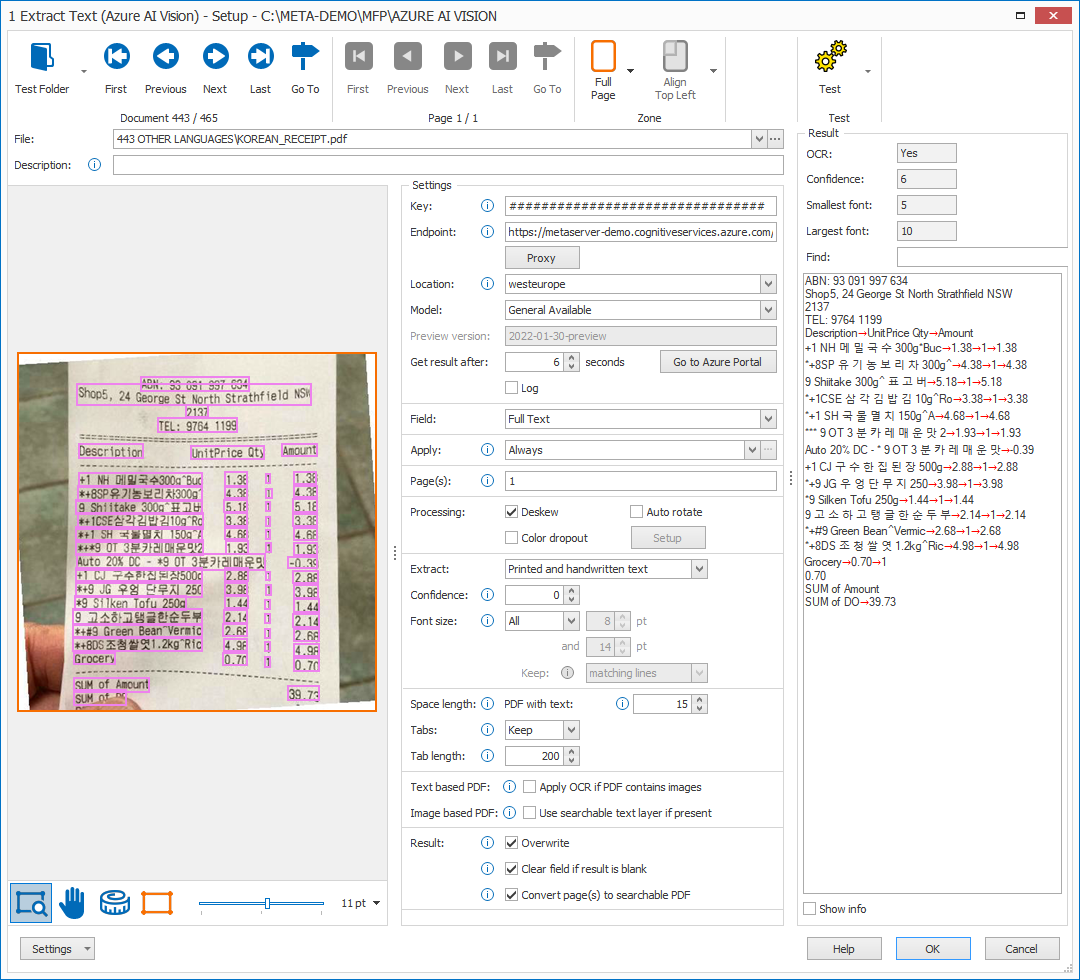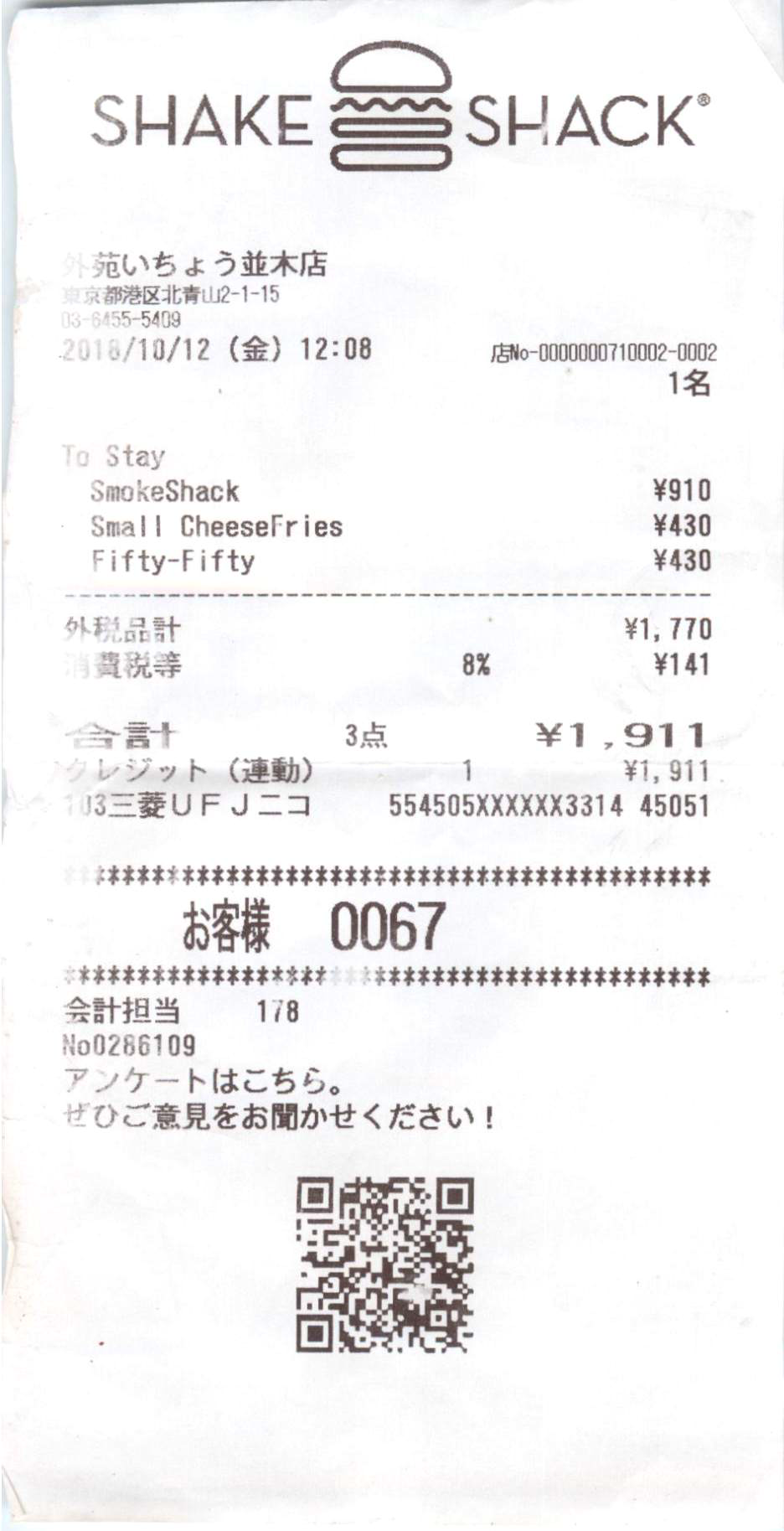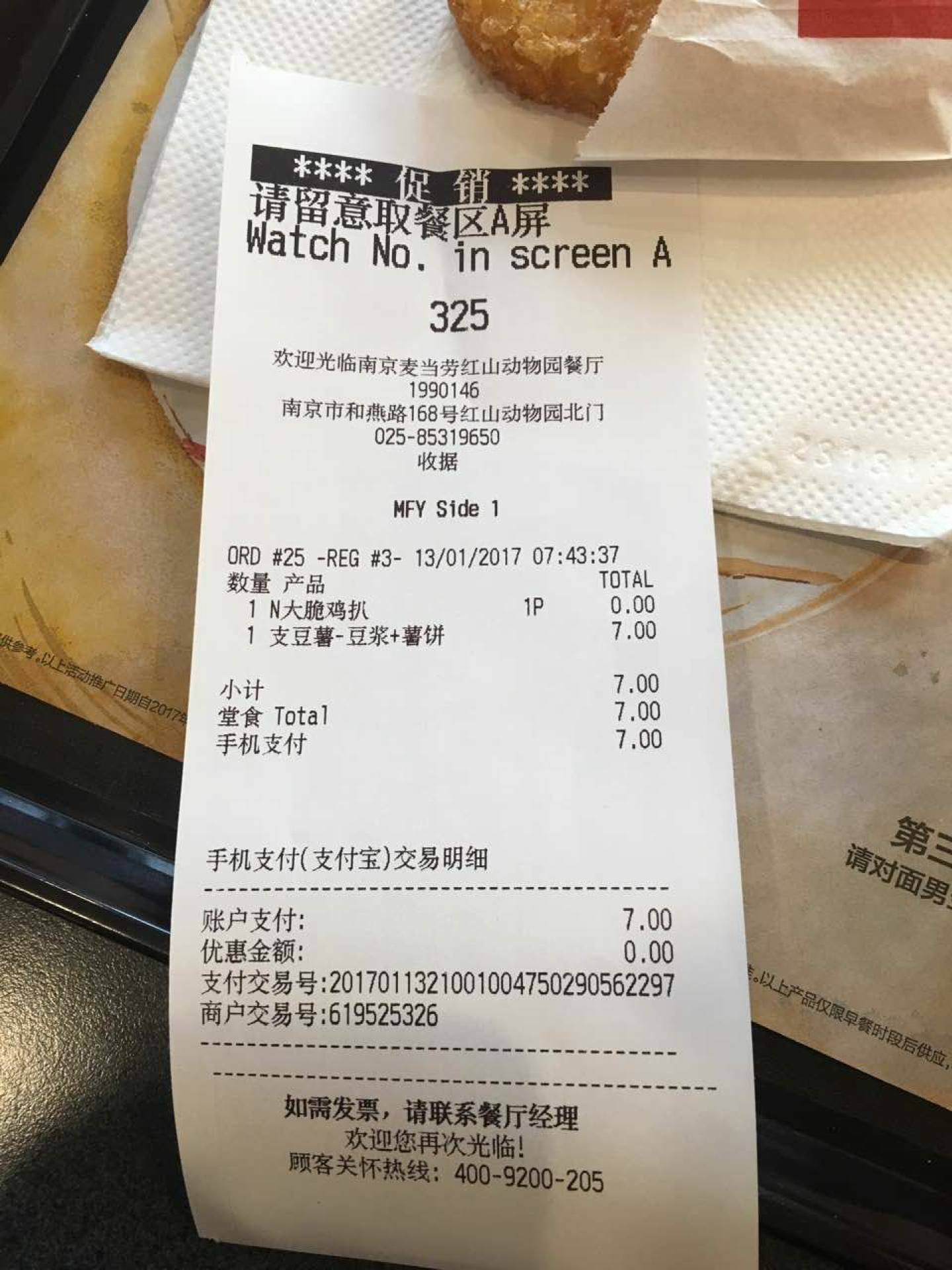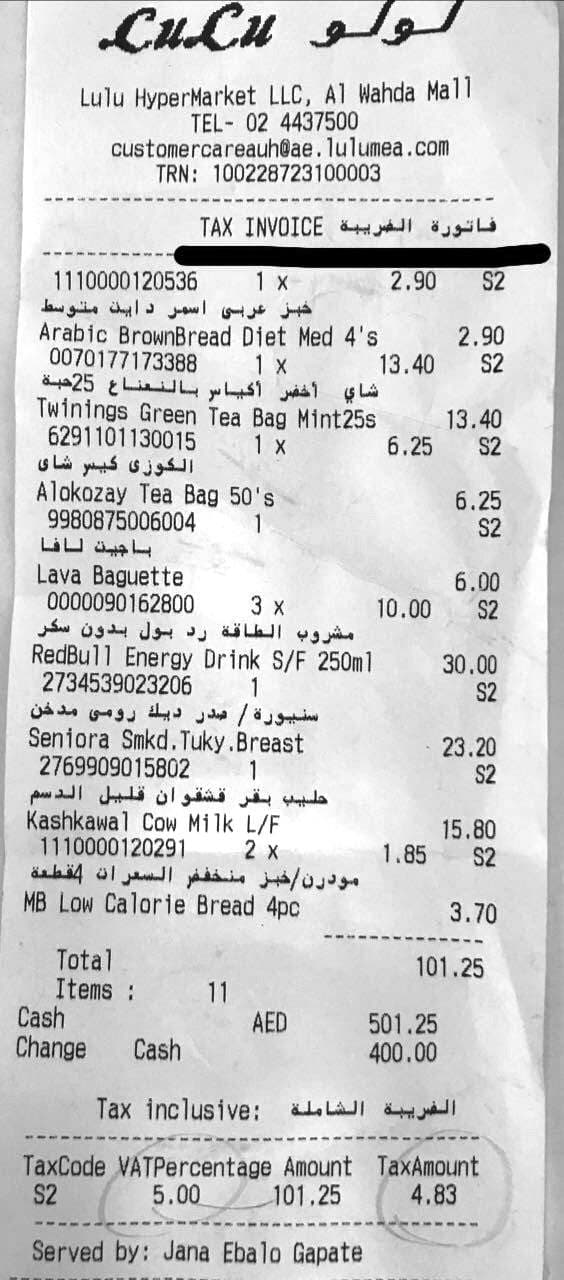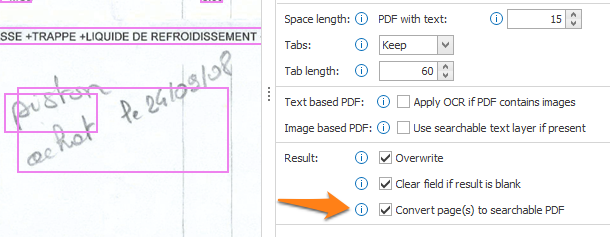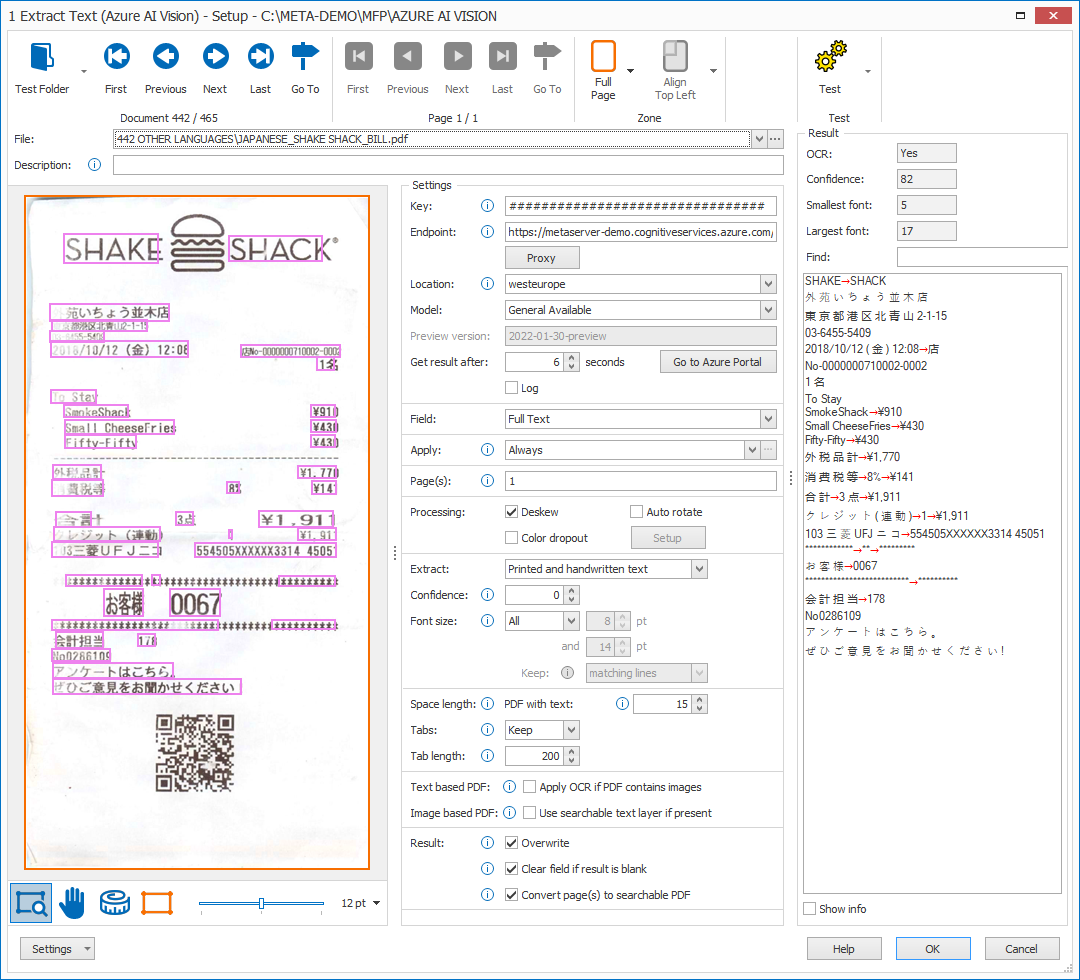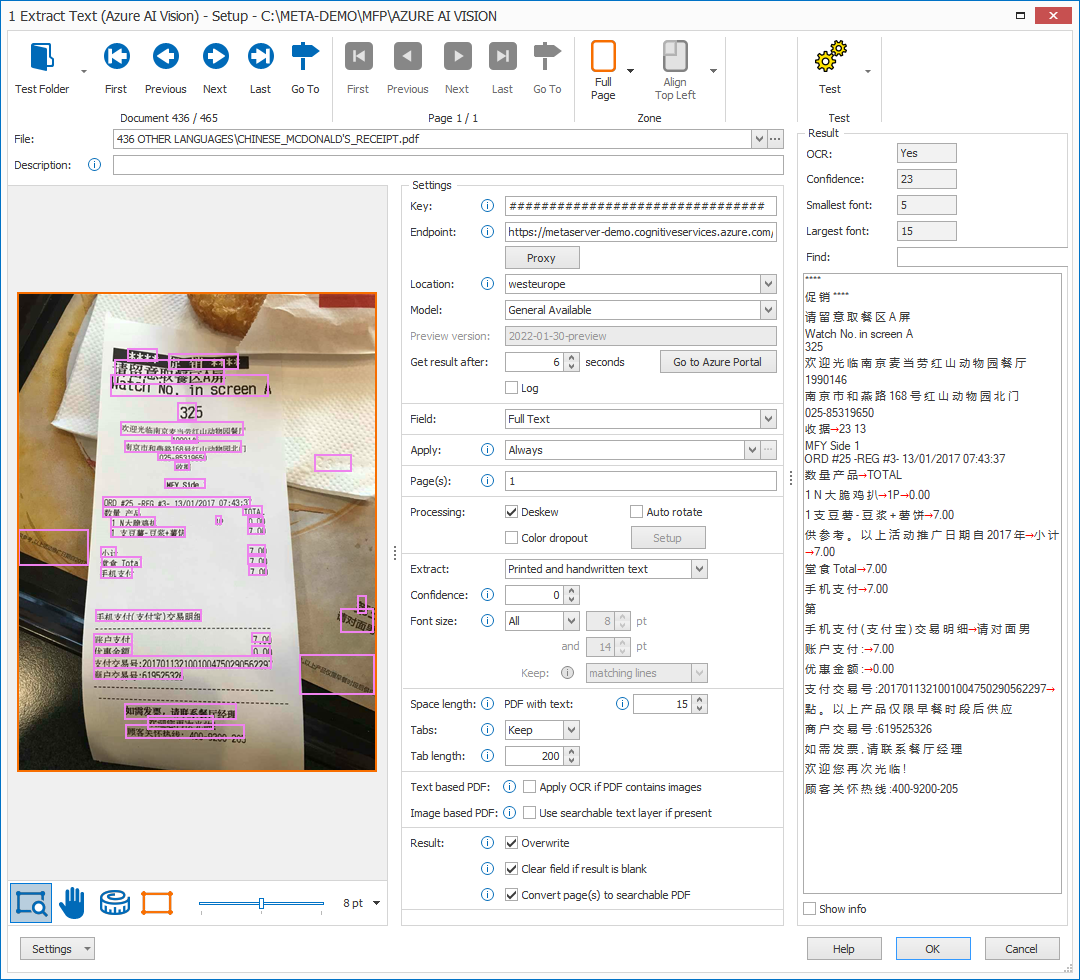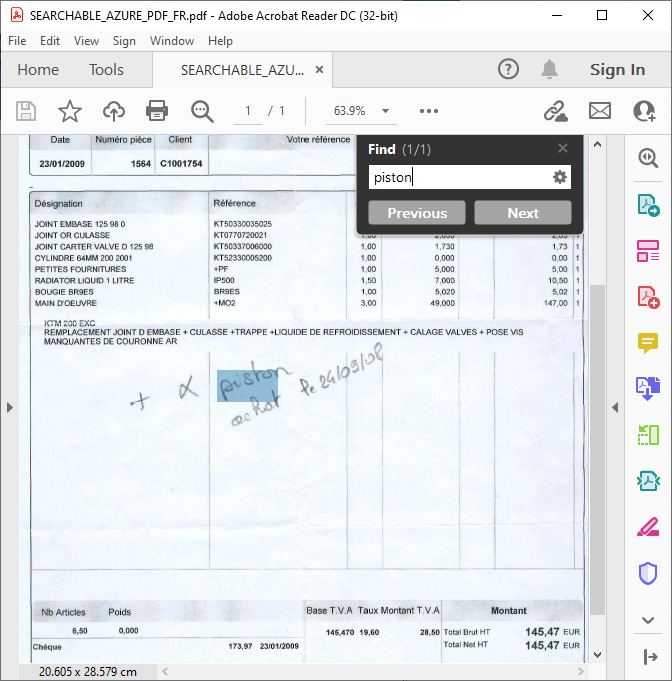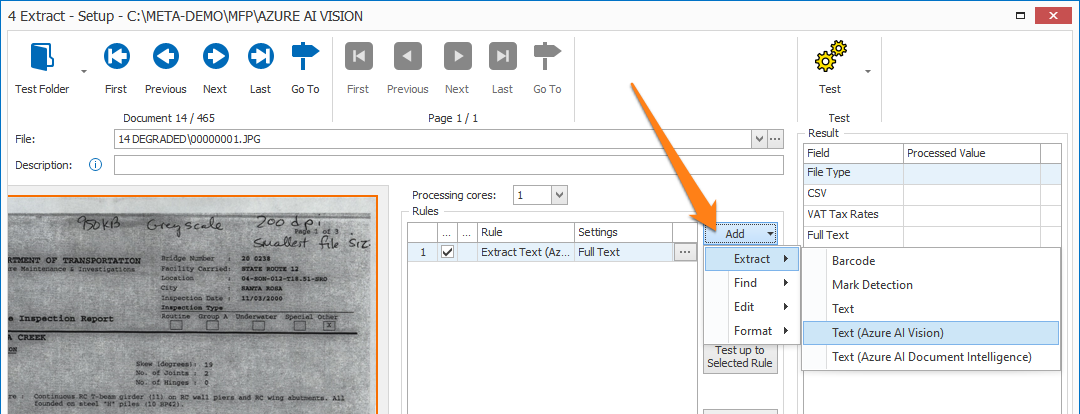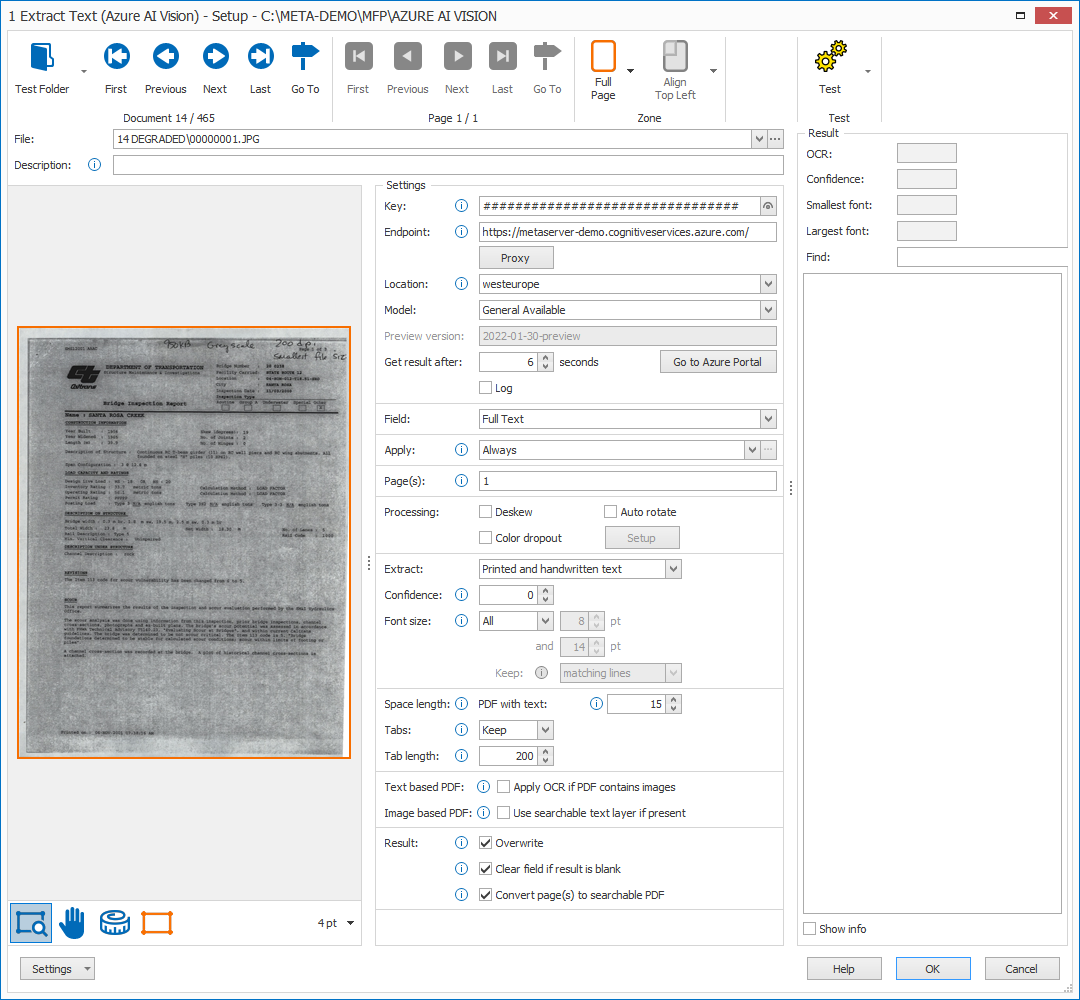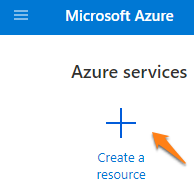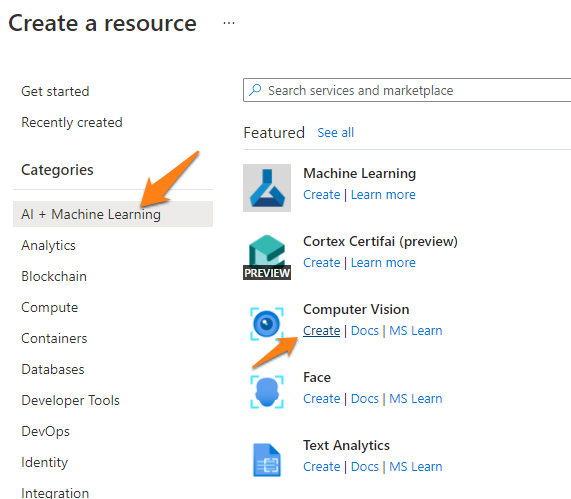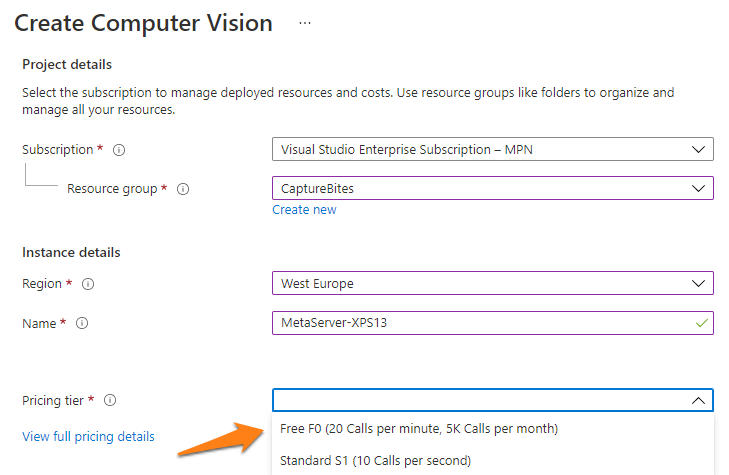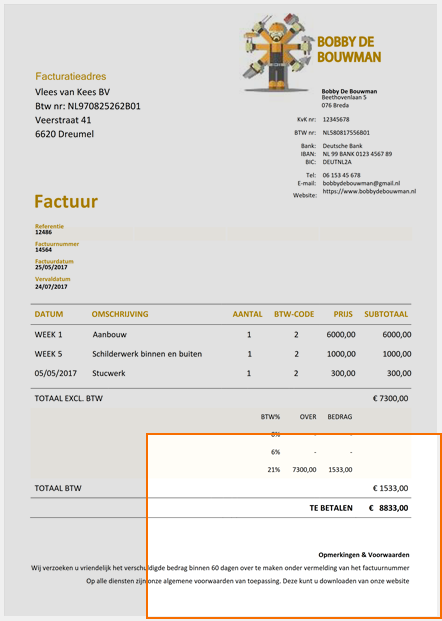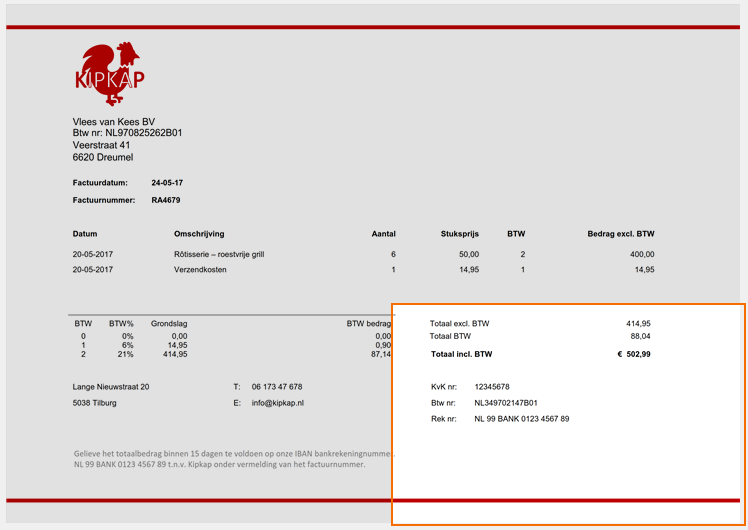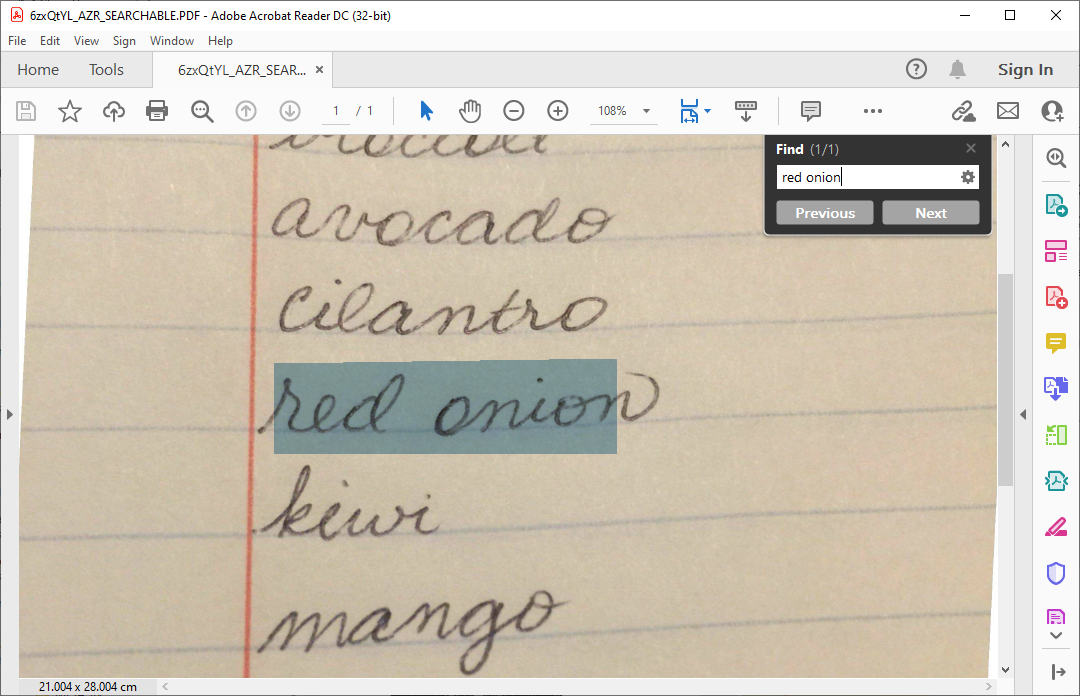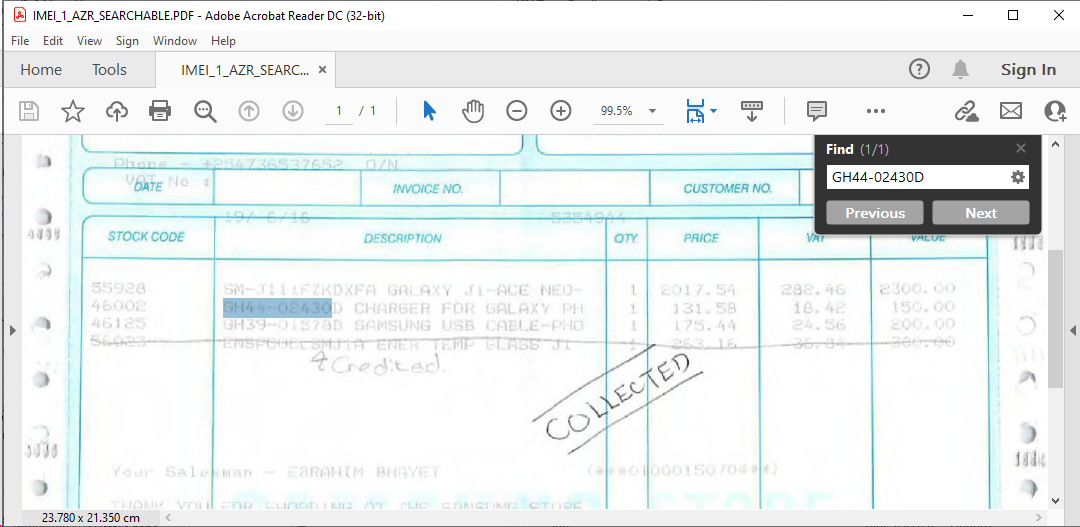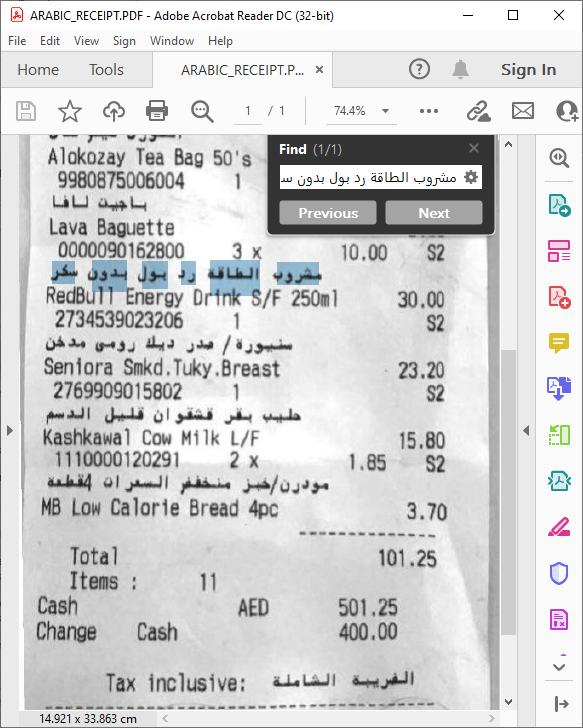MetaServer > Help > Extract > Extract Text (Azure AI Vision)
120-140 Extract – Extract Text (Azure AI Vision)
With MetaServer’s Extract Text (Azure AI Vision) rule, (FKA “Azure Computer Vision”), you can extract handwritten text, degraded text and deformed images with text (like those produced with a smartphone) from your imported documents and store the extracted data in fields. The results are impressive and are demonstrated in below examples.
You can specify the pages or zones you want to extract information from.
The engine can also read 122 different languages and detects these languages automatically, even in the same text line. Please refer to Azure AI Vision’s documentation for a complete list of supported languages (“Read” column).
For example (results are below each sample):
NOTE: The way the Azure AI Vision engine works, is that you also need to sign up for the Azure service itself. Paid plans are available starting from 1$ per 1000 pages (S1 Plan). There is also a free, 1-year plan where you can test the engine up to 2500 pages per month (F0 Plan).
IMPORTANT: The processing speed in the free plan (F0 plan) is limited to only 1 call per 2 seconds. For the paid plan (S1 plan), the processing speed is 10 calls per second, which is 20 times faster than the free plan.
For more information on how to apply for a key, please refer to the instructions below.
NOTE: For more technical information about how the Microsoft’s Azure AI Vision engine works (API, OCR, etc.) and how they handle Data privacy and security, please refer to the Microsoft Azure AI Vision documentation.
Extract Text rules are defined in a MetaServer Extract or Separate Document / Process Page action.
To add this rule, press the Add button and select Extract -> Text (Azure AI Vision).
TIP: The thumbnail on the right will follow you, so you can easily refer to the Setup window. Click on the thumbnail to zoom in.
How to sign up for a key
NOTE: If you don’t have a Microsoft or Azure account yet, you can sign up for free. You can find more info here:
https://azure.microsoft.com/en-us/free/
3) In the “AI + Machine Learning” section, create a “Computer Vision” Resource:
F0 plan (Free): 12 months Free (5000 calls/month = ~2500 pages/month (each page uses 1 read and 1 get call)
– The page file size must be less than 4 MB.
– With the 12 month free plan, the Azure server can only handle 1 call every 2 seconds. Because of this speed limit, we recommend to run extraction and separation only on one core with the free plan.
– Every 28th of the month, the counter is reset to 5000 calls (~ 2500 pages)
– When you run out of free calls before the 28th of the month, MetaServer will move documents to the Error tab and will report to wait until the 28th of the month to continue processing documents or to switch to a paid plan.
– Documents that ended up in the errors tab, can be reprocessed with a paid plan or retried when the free counter is reset on the 28th of the month.
– After the 12-month period, you will receive an email from Microsoft one month before the expiration, stating that the 12-month free service is about to expire and will stop working.
You will then need to switch from your free plan to a “pay-as-you-go” S1 plan (see below). You have 30 days to switch from your free plan to a “pay-as-you-go” S1 plan or to stop using the service.
The prices are available here:
https://azure.microsoft.com/en-us/pricing/details/cognitive-services/computer-vision/
– The page file size can be up to 50 MB.
– The Azure server can handle 10 calls per second. You can run Extraction and Separation on multiple cores with a paid plan.
– Microsoft only invoices READ calls. GET calls are free
– For high volumes >1M pages per month, find special pricing here.
– You can pay the subscription with a credit card or request to pay by check or wire transfer here:
https://docs.microsoft.com/en-us/azure/cost-management-billing/manage/pay-by-invoice
The example below shows a resource called “MetaServer”.
The example below shows a resource called “MetaServer”.
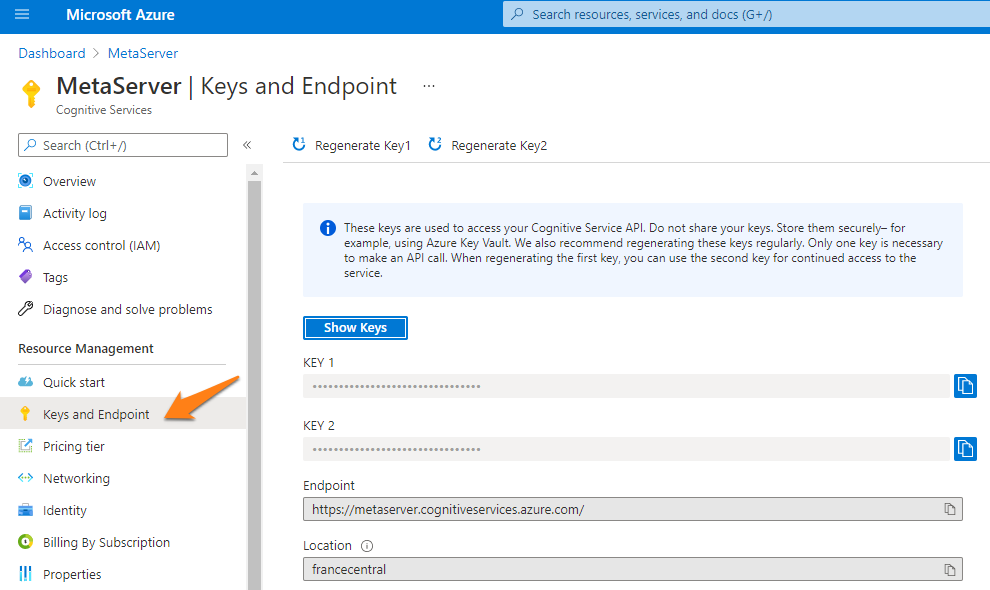
In your portal, you can also check your remaining calls. This can be useful to check if you’re not exceeding your current Microsoft Azure AI Vision’s pricing tier plan.
If you haven’t signed up for a key yet, please refer to the instructions above.

1) Type, Host, User name, Password: press the drop-down arrow to choose your proxy protocol and enter the connection settings to your proxy server. When in doubt, contact your IT department.
2) Port: enter the specified port of your Proxy server. When in doubt, contact your IT department.
03 – Model / Preview version: The “General Available” model uses AZVI’s official, general model.
If you select the “Preview” model, you can enter a specific “Preview version”. By default, this is set to preview version “2022-01-30-preview”. If you want to use another preview version, just enter the correct name of the preview model in the field.
Release info and preview model names are documented here:
https://learn.microsoft.com/en-us/azure/ai-services/computer-vision/whats-new
04 – Get result after [x] seconds: by default, this time is set to 6 seconds.
We recommend only changing this to a lower number if you have signed up for Microsoft Azure AI Vision’s paid plan. Because the Free plan is limited to 1 call every 3 seconds, we recommend to run extraction with a Free Plan on a single core and keep the “Get result after [x] seconds” at 6 seconds.
05 – Log: enable this option to create a log file each time the Microsoft Azure AI Vision engine is called. This option is typically used during diagnosing issues with Microsoft Azure.
On the client side, you can find the log information after running a Test in Extraction in the following folder:
C:\ProgramData\CaptureBites\Programs\Admin\Data\Log
On the server side, after processing some documents, you can find the log information in the following folder:
C:\ProgramData\CaptureBites\Programs\MetaServer\Data\Log
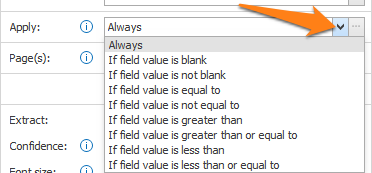
A good example of conditional extraction, is if you first try to extract a value using the Extract Text rule (= standard OCR engine) but it doesn’t return a valid result. Only then will you let the Extract Text (Azure AI Vision) rule to extract the value.
This speeds up the extraction process and only uses calls to your Microsoft Azure AI Vision resource when your first search didn’t return a good result.

1) If value of field: press the drop-down arrow to select the field value that needs to be evaluated.
2) is equal to / is not equal to / is greater than /…: enter the other value your field value needs to be compared with. You can also press the drop-down button to select different system and index values to compose your value.

For example:
– Enter 1 for the 1st page
– Enter -1 for the last page
– Enter 1-3 to extract from page 1 to page 3.
– Leave this empty in case you want to extract all pages (same as 1–1)
– Etc.
If a document does not contain a specific page, it is ignored. For example, extracting page “2,3” on a 2-page document will only extract page 2.
Press the setup button to specify which colors to drop out.
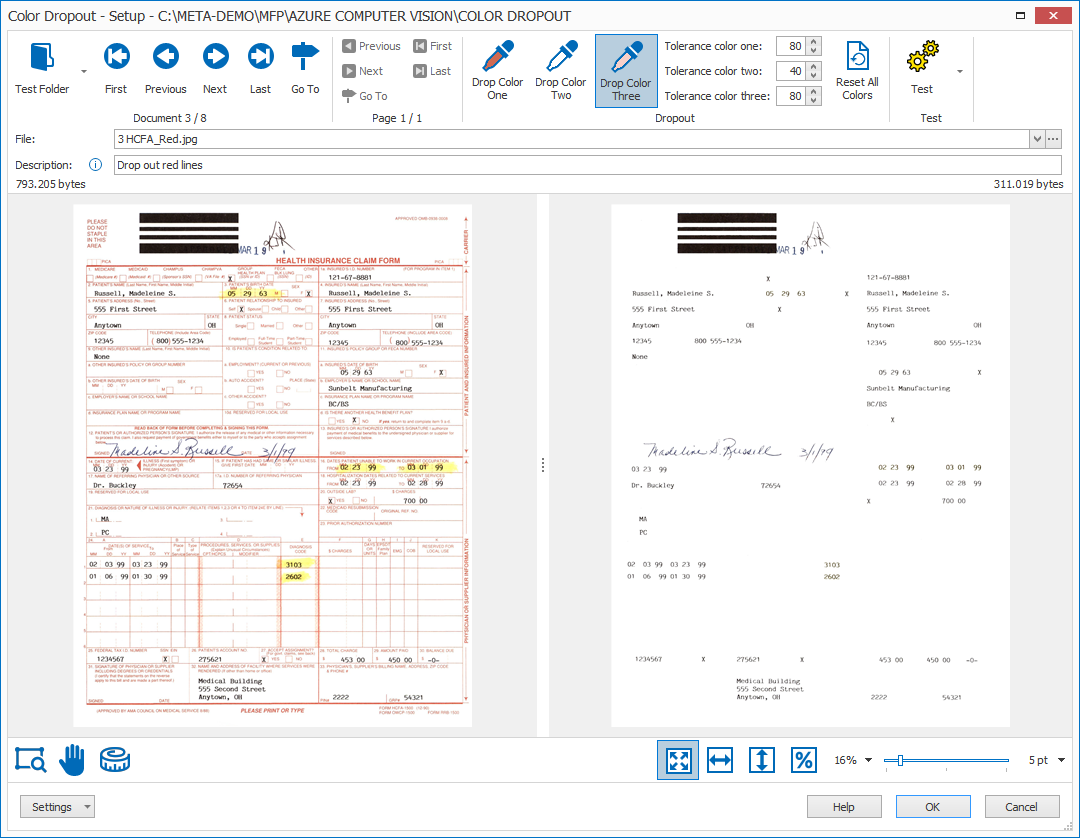
To reset all dropout colors to white (off), you can use the “Reset All Colors” button.
NOTE: The filtered image is only used temporarily to improve text extraction. The processed image keeps all the original colors.
01 – Zone: in the Extract Text (Azure AI Vision) setup window’s toolbar, you will find two Zone tools to specify your extraction zone:
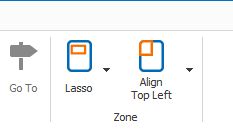
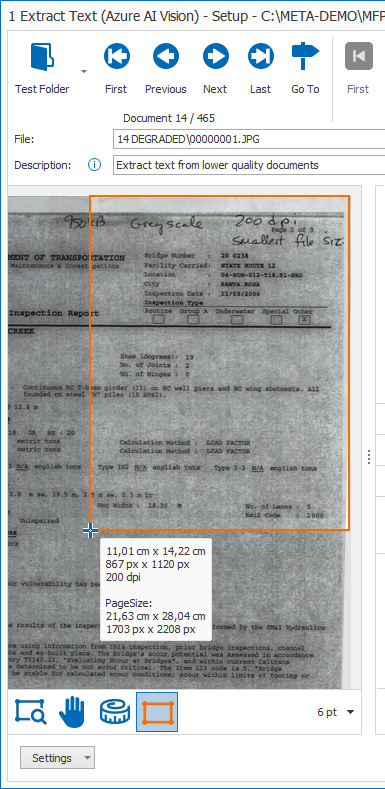
Printed and handwritten text: select this option if your extraction zone contains both printed and handwritten text.
Printed text: select this option if your extraction zone only contains printed text.
Handwritten text: select this option if your extraction zone only contains handwritten text.
In general, we recommend you scan your documents with a resolution of 300 DPI for the best OCR result and compact file size.
For legacy reasons, this setting is retained. We recommend to start using the new Check if confidence is lower than option in the validate rules.
To help you in defining the correct confidence level, you can check the confidence level of each word group in your test result using the “Show info” option. You can also see the highest and lowest confidence level displayed above the test result.
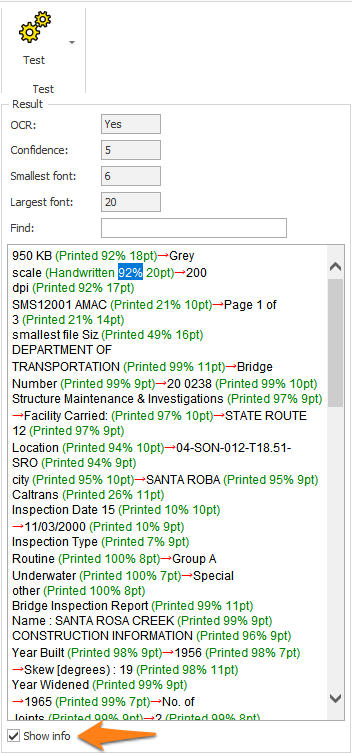
To help you in defining the correct font sizes, you can check the font size of each word group in your test result using the “Show info” option.
You can also see the font size of the smallest and largest character displayed above the test result.
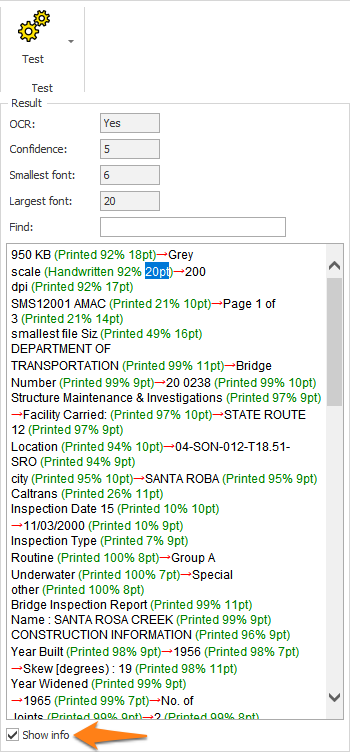
PDF with text: here, you can adjust the length for spaces coming from electronic / text-based PDFs with an existing text layer.
Scanned image (OCR): here, you can choose to let the OCR engine determine the space length (Automatic) from scanned / image-based PDFs and image files (TIF, JPG, etc) or you can adjust the space length using a custom value.

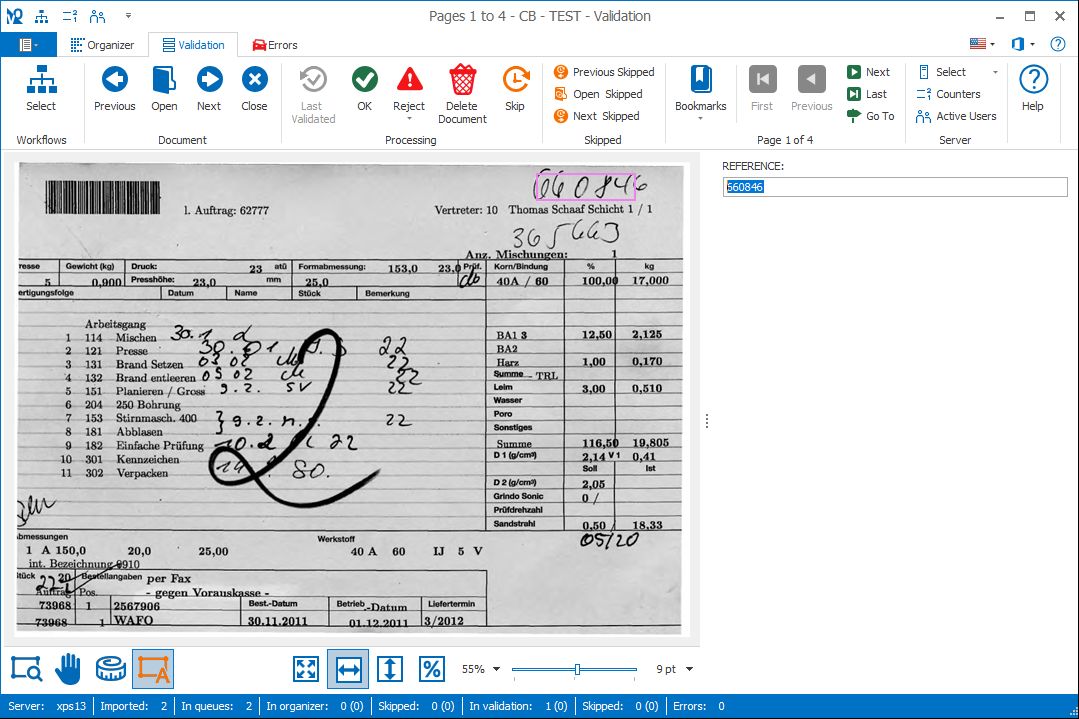
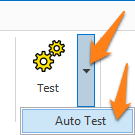
03 – OCR (Yes/No): there are many types of PDFs. The most common PDF type used with MetaServer are Text-Based PDFs and Image-based PDFs.
Electronic / Text-based PDFs are generated by a computer program like MS Word, Invoice / Report creation software, etc. Text-based PDFs already contain computer text represented by fonts. This text can directly be extracted without any OCR processing.
Scanned / Image-based PDFs contain an image of each of the pages of the document and require OCR (Optical Character Recognition) to convert the images to computer text.
MetaServer automatically switches between electronic text extraction, in case of text-based PDFs and OCR extraction, in case of a scanned image.
This way, your Microsoft Azure AI Vision resource is only called when OCR is required. This saves processing time and calls.
If OCR is applied, the OCR value will indicate Yes.
If you want to see the text-based PDF detection in action, test the following documents:
C:\META-DEMO\MFP\CMR\CMR-01.pdf (image-based PDF)
C:\META-DEMO\MFP\CMR\CMR-02e.pdf (text-based PDF)
The text-based PDF won’t apply any OCR and will show the exact same text of the text-based PDF in an instant. Extracting a text-based PDF is much faster than an image-based PDF because the latter needs to have OCR applied.
The below screenshot shows the result of the text-based “CMR-02e.pdf”:
Even though a line goes straight through some of the text, the text extraction is still perfect because the line is just an object completely separate from the text. The OCR value in the Result panel indicates No.
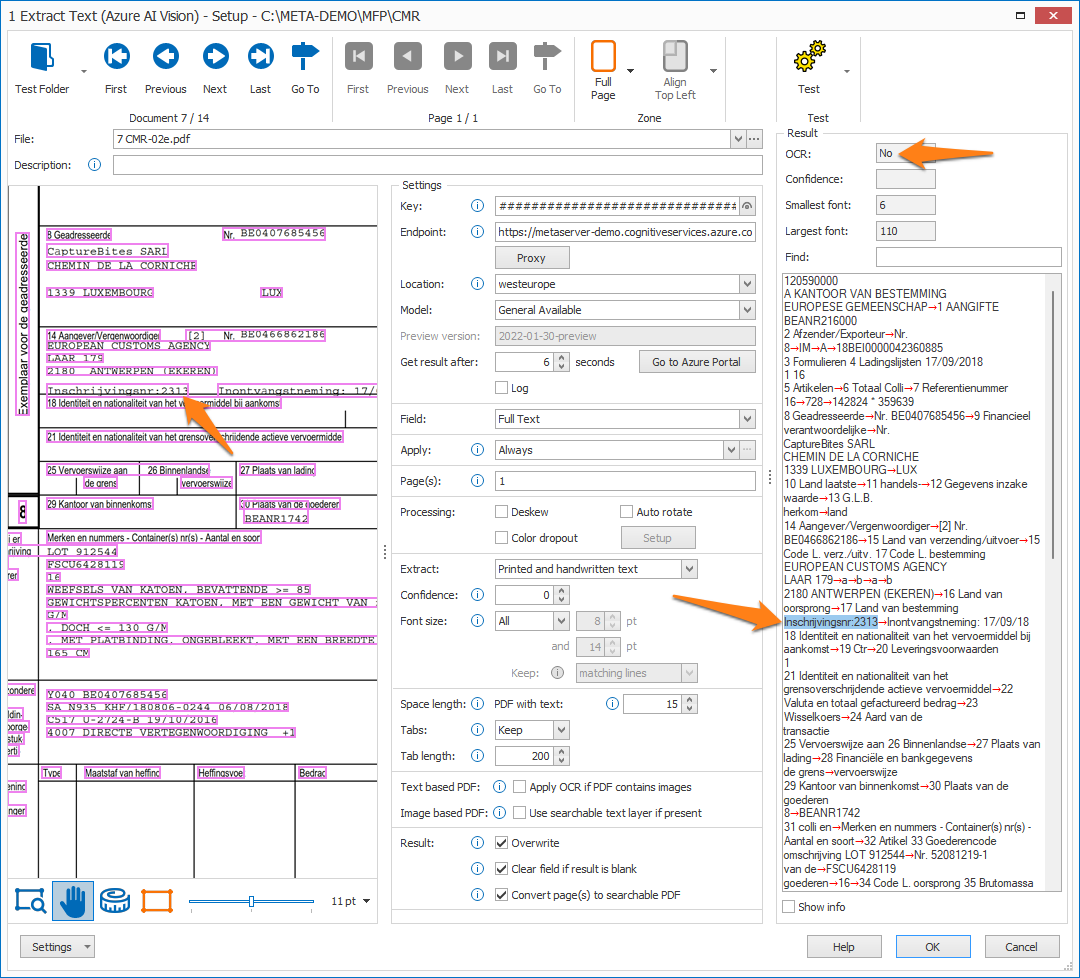
If you set the confidence level higher than this level, characters with a confidence level below the set level will be filtered out of the result.
TIP: you can copy the current settings and paste them in another setup window of the same type. Do this by pressing the Settings button in the bottom left of the Setup window and by selecting Copy. Then open another setup window of the same type and select Paste.
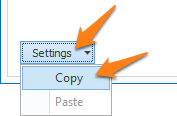
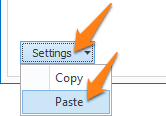

You are also able to run the Azure AI Vision engine on-premise using Containers through the Docker engine.
Running the engine on-premise can be useful for security and data governance requirements.
You can find a detailed guide on the prerequisites and how to set up your AZVI container here.

